October 2016
31st October - Can it really be November tomorrow?
Someone has forgotten to tell the weather wizards what the date is! Temperatures in the mid 60s here today, and whilst it was gorgeous sitting in the sun at the plot, talking through plans for the coming year, cup of coffee in hand, it is not really what the plants need. The clocks have gone back now, so it is suddenly dark much earlier, which acts as a bit of a reminder about the time of the year it is. It has been useful to have had dry weather this week though, as you will see later when I talk about waht we have been doing.
Firstly though, let's celebrate Harvest Monday as usual, alongside Hallowe'en, and yesterday's Diwali celebrations too. I should just explain the header photo first: this is the drink I made to take to a party at our daughter's house on Saturday, and it tasted much better than it looked! (Secret ingredient: tinned lychees with black grapes)
One of our most exciting harvests this week has been Saffron!! Each flower has three red stamens, which I carefully picked out with tweezers so the rest of the flower could stay intact, and this is the saffron we use in cooking. Weight for weight it is more valuable than gold!! So far we have had three flowers open, which is not quite enough for a paella yet, but is still a cause for celebration here. The stamens are carefully stored in kitchen roll, hoping for another flower or two to grow, but with such young corms we are lucky to have any at all.
Other more usual crops we have harvested this week include:
-
More carrots. These are St Valery and seem to have taken for ever to get to this size, but they certainly tasted good. The first pulling this week joined some chicken in a curry, and the second grated raw in salad
-
More Lettuce and Spring Onions, mainly for salad. I keep meaning to cook some lettuce and peas with white wine, and then the thought passes. I shall try and focus this week as the lettuce needs using up before it bolts
In early Spring I added lots of our compost to the bed where the carrots were sown, and it seems that there were quite a few viable seeds from plants we had chopped up for the compost bins, because, apart from the Verbenum bonarensis and the antirrhinums I transplanted out, there is the most amazing crop of Flat Leaf Parsley growing amonst the carrots. It has really benefitted from the extra protection the enviromesh has provided, and is now giving us huge bunches of lush leaves.
This is the first big bunch I have picked. Some went into the filling for a herb and feta loaf along with some of the cherry tomatoes in oil I made afew weeks back, some went in potato salad, and masses will go in the dehydrator in the morning. I have never dried parsley before; it sounds easy enough, although I shall be interested to see if it keeps any flavour. The next bunch will be chopped and frozen as a back up plan.
Another harvest was the last cutting of comfrey leaves, which were added to the compost bin to increase the nutrient content as it rots down. We grow several plants in a row along part of the boundary fence of #146, and these are cut several times a year. They make an excellent plant food when steeped in water, especially for flowering or fruiting crops. It does smell pretty bad though!
And whilst on the subject of compost,we opened up BIn No 2 this week, and just look at the goodness that spilled out. Compost is such amazing stuff! I put everyhting possible in, from kitchen peelings, soft green weeds, chopped up nettles, comfrey, haulms from peas, beans, potatoes, old tomato plants, flowers that are finished, shredded paper, torn up paper egg boxes, cardboard and newspapers, chopped up prunings from the fruit trees, in fact anything of plant origin really. The green stuff provides mainly nitrogen and the brown stuff mainly carbon, and through the action of micro-organisms the whole lots slowly turns into the beautiful crumbly brown material you can see here.
It only takes a 5cm depth added to soil to make a significant difference to its structure and nutrient content, and over the last six years our heavy alluvial clay on #146 has been transformed, with each bed taking its turn to get a lovely dark brown blanket from time to time. Worms love it too and draw much of it into the soil themselves, without us having to actually dig it in.
So although this is not traditionally considered as a harvest, for me, it is one of the most important!
Bin No 3 is still "cooking" and will be ready for use in the Spring, and Bin No 1 is now full to bursting and so it now wrapped over for the Winter. A new batch will be started in Bin No 2 this week, and so it goes round, bin by bin.
And that is the end of the harvests this week, but it does move seamlessly into what else we have been doing... shovelling manure! Abi finished making the bay for it just in time for the delivery to arrive. One tonne of manure is a lot!!! Rather than just shovel it off the roadway onto the heap, he went for the "one touch" strategy and put it in the wheelbarrow and then on the empty beds on #145, while I organised weighted down black plastic covers to keep them nice and snug for the Winter. After four hours we were in dire need of a sit down, I can tell you, but the roadway was clear, the remaining ...rather large...heap and the beds were all covered. That leaves three beds on #146 that need manure and covers, and then we shall be ready for Winter, even if the weather isn't!!
We saw tThe unseasonal weather has mean there are lots of insects still around that would normally either have gone into hibernation or have just died. We saw two REd Admiral Butterflies today, as well as a lareg dragonfly and several varieties of bee.
One of the most amazing ones this week was a Hummingbird Hawk Moth that we saw feeding on the late lavender flowers in our front garden. They sometimes come here from Europe in the Summer months but rarely make it as far inland as Reading, so this was a really special sighting indeed. Its wings were moving so fast they looked a blur, which means these are not the best of pictures, but you can clearly see its long tongue.
And here to finish this week is a photograph of the robin who seems to have won the battle to occupy our garden as his territory. He is very keen on meal worms, but was completely distracted by this massive earthworm that he spotted. He managed to wrestle it out of the ground but then needed a rest before he tackled his dinner!
Thank you for sharing again this week, I really appreciate your feedback, and hope you enjoy the photographs.
If you would like a message when updates are posted, please send an email to updates@alittlebitofsunshine.co.uk. Thank you very much for your support
If you'd like to check out what other people are harvesting, have a look on http://www.ourhappyacres.com/
where Harvest Monday is hosted by Dave
24th October - Autumn Marches On!
Now that we have had some decent sunny days and some cold nights, leaves on the trees are colouring up nicely now, and watching them drift slowly to the ground is mesmerising. However lovely the leaves are, we can't eat them though, so let's take a look at what we have harvested this week!
First to the table is lettuce, which is in the header photo of the week for me. As some of you know, rather than raise these from seed, I have been buying the occasional tray of cut-and-come-again mixed lettuces from the supermarket and planting them out in small clumps. What a success it has turned out to be too! We have had a succession of succulent leaves of all sorts of different shapes and flavours, and as you can see, often all together in one bunch too
Still on the salad theme we harvested the first of the latest sowing of Spring Onions yesterday, and vert tasty they were too. I've saved most of the green to use in place of chives, as these are getting a bit coarse now.I am not expecting the rest of them to put on masses of growth during the cold months, even in the shelter of our mini-tunnel, but they should sit happily in the ground, neatly in little bunches until we want to eat them... at least I hope so!
Sowing the seed in modules and growing the plants on to plant out in a small clump, either under cover as these and the ones in the early Spring were, or out on the plot, works far better for me than sowing direct. I shall certainly be using this method again next season,with the first sowing in late January. If anyone is struggling with these as a crop, then I can recommend this as worth a try.
Achocha are still cropping well. Now that I realise how prolific they are, even with just the one plant, I have been picking them when they are about 5-6cm long and using them sliced in salad, in stir fries, or as an extra vegetable in curries. Just because they are called Giant Bolivian doesn't mean you have to wait until they reach their full 15-20 cm before eating them. When they are small, the seeds are hardly formed and there is plenty of juicy flesh inside them. The flavour is cross between green bell peppers and cucumber.
So much for me never growing these again. I think I spoke too soon, and now have let one fruit mature for seeds for next year! Interestingly there are a couple of other plot holders growing something which looks very similar. One of the local Ghurkas, gave them seeds which originated in Nepal, where they are a traditional crop amongst peole living in the foothills of the mountains. These are so similar to the South American variety, which also come from a mountainous area, and must surely be related somehow.
There have been some surprises this week, one of which has been a couple of trusses of green tomatoes that were hidden amongst the huge Indian Marigold plants. Late Blight swept across our site a few weeks back, with devastating effects. Any maincrop potato plants still in the ground were struck down virtually overnights, as were non-resistant varieties of tomato grown in the open. I took all our tomatoes home to ripen and so still had an excellent crop to use, but this one side stem was missed. It happily grew away, blight free, to set some good sized tomatoes. It is Crimson Crush, and this was an unwitting excellent test of its durability, which it passed with flying colours!!!
Our different kales are in full swing now. Last night we had a mix of Redbor and Ragged Jack used in place of spinach with our meatballs in spicy sauce, and very good it was too. Tearing the leaves off the stem and into small pieces made it quick to prepare, and a good soak in salty water to get rid of any lurking whitefly crisped it up beautifully before putting it in the pan for the last fifteen minutes or so of cooking. It does take longer to cook than spinach, and in this dish needed to be soft rather than al dente. Went down very well!
PS The dilute washing up liquid put paid to most of the whitefly. I just need to remember to keep it up so that the population stays low.
The end of our fruit harvests has come. I picked the last bowl of Concorde pears from the tree in our garden on Saturday, and yesterday was surprised to see a fair number of blackberries looking plump and glossy. Usually by the start of October any that remain are mushy and taste slightly odd, but there they were, looking as good as those in mid-Summer had been!
And the last harvest this week was a real first for us: Green Figs! Our Brunswick fig tree had given us many, many luscious, deep purply-green fruits this Summer, and, as always, it also grew a second crop, which doesn't ripen because the weather gets colder. We normally pick these off and throw them away, just leaving tiny ones the size of a match head to grow into next Summer's bounty. It always seems such a waste, even though it is what we have been advised to do..... but this year, as I was gazing at them, they reminded me of the tinned figs that used to be served as part of breakfast in hotels from time to time.
Yes, you know where this is going, don't you? After a lot of reading, I settled on attempting to make something similar to the Greek sikalai gliko that I saw on Mama's Taverna website. Whoever would have known there were 9kg of unripe figs on that tree, or that so much latex could come out of them as they were being picked? If anyone does do this, please wear gloves and protect your arms ... were were itching for hours afterwards, despite washing several times.
Here are the figs in the sink when we brought them indoors:
I didn't have a pan big enough to take all the figs at once, so after preparing them, which took an hour and a half and fused my rubber gloves together with latex, to resemble rubber mittens, I decided to deal with the next phase in four batches. Soaking and boiling made them give out even more latex so I had to scour the inside of the pan to remove it after each boiling, and the two batches I tackled each needed two boilings. I wasn't sure this was such a good idea by then to be honest. Maybe there was a reason people don't usually harvest these little figs!
I managed to get those two batches together into one large pan to sit in their syrup overnight, and I resolutely ignored the slightly alarming turpentine-like smell that filled the house as I went up to bed. Today was more boiling, reducing of syrup, and bottling. At this point the two other bowlsful still not started upon were consigned to the compost heap... how many jars of figs can one household get through, even including gifts to family and friends?? Not more than 8 I am quite sure!!
Manoeuvring the hot figs in boiling syrup into the jars was messy, but at least the end was in sight by then, thank goodness! But they do not taste of turpentine thank goodness, but delicately of rosewater, and the latex seems to have been completely banished, so maybe next year I might make some with lemon... we shall see! At least I'll know what I shall be taking on if I do.
Down at the plots we have a 15m long "hedge" of blackberries, tayberries and loganberries between us and our neighbours, and at this time in the year all the branches and canes that have fruited have to be cut out, and new growth that will bear flowers next year needs tying onto the post and wire framework. All the spent growth then has to be barrowed away to the communal green dump, as it is too much to cut up for the compost bins. Six trips with the barow piled high gives you an idea of the volume I am talking about!
It also gives me the chance to weed underneath the plants and replace any woodchip that is wearing a bit thin.
When you see them like this, all neatly tied up, it is hard to believe they will grow to mammoth proportions again by next Summer, and it looks quite strange being able to see through to next door like this, but reducing them right back has two real benefits. It reduces the wind resistance of the "hedge" before the Winter gales, which means it might stay upright, and it also makes sure than any rampant growth heading out across the veg beds can be cut out now before the plants waste energy on growing these any further.
iThis is a harvest of the future: our saffron corms are growing at last, although I don't think they are yet large enough to flower. Having talked to my friend Sue, who has hers growing in troughs so that they can have the well drained soil conditions they really need to thrive, I might move them out of this bed when they die down again. Despite the sand I dug in, the soil is still quite heavy and is fairly rich. I want them to put their energy into developing flowers, not splitting to form more and more tiny corms, which is what happened last season. Given that saffron originated in arid regions of the Mediterranean, this is worth considering. Hers are a year older than mine, so fingers crossed, I could perhaps be harvesting little saffron stamens within the next year or two
And here to end this week is a photograph of a tree I saw at the Hawk Conservancy last Friday... just beautiful. Look closely to the bottom right and you can see a small metal sculpture of an owl, which I would happily have taken home if I could!
I hope you have enjoyed sharing the blog again this week. Thank you for reading it all.
If you would like a message when updates are posted, please send an email to updates@alittlebitofsunshine.co.uk. Thank you very much for your support
If you'd like to check out what other people are harvesting, have a look on http://www.ourhappyacres.com/
where Harvest Monday is hosted by Dave
17th October - The compost bins are bulging now.
The great Autumn Clear-up continued this week, with a huge amount of greenery consigned to the compost bins as harvests slow.. that pattypan plant (no more trying to think of ways to use them), the rest of the pepper plants, soft weeds from #145, most of the french marigolds and plenty of old cabbage leaves, together with a whole sack of shredded paper. All combined to start the magic that leads to wonderful brown crumbly compost next year. Really look upon this as a sort of harvest, although I realise some may find that odd!
We have had more recognisable harvests this week too, a couple of which came as a bit of a surprise, so, here is our Harvest Monday round up:
First out of the traps are these, our unexpected Chocolate Cherry tomatoes hiding up above the shade net in the greenhouse at home, together with a few Yellow Pears, and perfect, unmarked fruits they are too! A welcome additon to salads, made even more so as we thought there would be no more until next June/July! There were also three cucumbers, which I forgot to photograph, and these were pretty good as well.
.
Emptying the greenhouse is one of those jobs I dread, as it always gets terribly overgrown by this time in the year, with the grape vine almost out of control. Now it is all neat and tidy, with the glass cleaned inside and out and the bushes outside cut back to allow as much light as possible in during the dull months to come. It did seem slightly bizarre putting up the bubble plastic insulation on a bright sunny day with temperatures touching on 20°C... I have made sure the windows can still be opened ... but it was much easier to do when the greenhouse was actually empty. The vine is pruned back to its new framework, after being completely cut down two years ago, and the chilli plants that I am overwintering are already on the staging
Plenty more chillies picked this week:
Another less obvious but very important harvest has been chilli seeds. All of these are open pollinated varieties and should come true from seed. They are spread out on kitchen paper, with names written on each piece of course, unitl they are completely dry. They will be sown early next year in the propagator.
The sweet peppers have ripened nicely since last week, and this is the last of them.
One of the new crops has been pears. Our small trees provide a few fruits to store and eat as they ripen, plus enough for a jar of pickled pears. When I was a child, pickled pears were an annual family ritual, with us scrumping cooking pears from the hedgerow over the back of Portsdown Hill, mainly those that had fallen in the nettles, as I remember. Mum used to preserve these in spiced syrup, to be ceremoniously opened as an accompaniment to Christmas lunch. Some years they were amazing, and other years a bit too hard, but we looked forward to them with great anticipation, all gloriously pink and glowing in their jar.
I used our small Conferences and Concordes to make a jarful, although using brown sugar hides their natural colour more than I had realised it would. I hope they taste good though!
And the last harvest this week was also a surprise: new potatoes! A few weeks back I planted some seed potatoes, with the fond idea that we might have some new potatoes around Christmas-time. The plants quickly succumbed to late blight, so I cut the haulms off and promptly forgot all about them. Until this week, digging over a patch of ground, just look what came to light! Slightly scabby but still good-enough-to-eat new potatoes!!! Just right for a potato salad with some onion green from the salad onions in the mini-tunnel. Mmmmmmm
I haven't posted yet more photos of pattypan squashes or achocha. The last of the patty pans came home today, but the achocha are still going strong. We also still have a good supply of lettuces from the cut and come again that I bought from the supermarket, an idea I shall use again next year for certain.
This time in the year is not only about giving some of the beds a rest, but also starting off crops that will be harvested before next Summer. This week I put in sets of Autumn onions, the Jermor shallots I saved from this year's crop and the Elephant Garlic. I bought some cloves of this last one from the Garlic Farm on the Isle of Wight, and they were truly massive, bigger than a pointy golfball, and so I am hoping for a really good crop next July. They are so much larger than the ones I have grown before!
Another job I look forward to with a distinct lack of enthusiasm is clearing old leaves out from the Winter brassica bed, made even less appealing by the dense snowstorm of whitefly that have taken up residence on their leaves this year.
As we took the debris netting cover off, made especially to keep out the Diamondback Moths earlier in the year, clouds of tiny whiteflies made breathing without coughing almost impossible. They feed on sap and exude any excess, which falls onto the leaves and enables black sooty mould to grow. Altogether hideous. They have a three day breeding cycle and so any controls need to be regular and frequent, in this case spraying with dilute washing up liquid. I also took off all the leaves that had huge numbers of egg scales on their undersides, and washed off as much sooty mould as I could
After a couple of hours' work the leaves looked much better and the infestation of whitefly was much reduced. I just need to stay on top of things to make sure they don't build up again. I also had extremely clean hands after all that soapy water!
Abi installed the wooden edging to the bed and staked the Purple Sprouting Broccoli, before we put the lighter netting over the plants to prevent the pigeons from feasting on them.
The Brussel Sprout plants are developing buttons; I hope they will now stay green rather than getting swamped by the whitefly, and the last few savoys are looking very tempting. Funnily enough their puckered leaves seem far less interesting to the whitefly.
Good job, well done all round!
Abi also layed landscape membrane over the paths on #145, and then we carted woodchip until they were all covered. They do look very tidy, and will be much easier to manage than the grass/weeds originally planned. Two views here, plus some of pictures of #146.
Thank you to the many of you who sent us messages of congratulations last week on our Gold award. Your good wishes were so much appreciated and really valued. Thank you again!
I always like to end with a photo or two of flowers, something new where possible. This Calendula plant sprung up again after I took out the bean plants, its flowers glow brightly in the sun. offset by maroon reverse to their petals.
I have saved seeds as well, so am hoping for a really good display of these through next Summer.
10th October - Wow! We won a Gold!!!
The results of the Reading in Bloom competition were announced last week, as we were awarded the Gold for the "Most Attractive Allotment! It made all that dead-heading and path weeding worth it, and it was great to see our plot so much appreciated. None of it stands still to be admired however, and after last week's glorious sunshine and temperatures up to 20°C, this morning came as a bit of a shock. Almost frosty!! It certainly spurred us on with the Big Autumn Clear-up at the plots, with feet firmly on the ground wearing extra socks to keep warm!
Harvest Monday is first though, as usual. There have been some "firsts" this week, reflecting how the year is moving on.
The Greyhound cabbages have nice solid hearts now. They are usually grown as spring cabbage but I sowed them later than usual, hence they are ready now. The older leaves have a small amount of damage but the hearts are perfect, and absolutely delicious. One half, cooked with butter, plenty of freshly ground black pepper and some dill seeds accompanied our beef stew and roast potatoes, and the other half will be joined by some of our carrots and onions to become coleslaw later this afternoon.
The next of the "firsts" is our sweet pepper harvest. The cold weather helped me decide to cut them all, as they are not likely to ripen fully now. We grew two main varieties, six plants of each: Mammoth Sweet Spanish and Bullhorn. The latter turn a glorious yellow or orange when fully ripe (we have eaten a few already) and are very tasty, whilst the MSS ripen to red. Both gave us decent crops of four or five fruits per plant, and nice sized peppers too, so they are both still on the list for next year. The Sweet Purple however, had smaller and fewer fruits and although there is some novelty value in their colour, I'd rather give the space to a heavier cropping variety.
They were all grown under the partial shelter of an old cloche with holes in the cover, so I ma hoping that we shall have a polytunnel next year to give them more heat.
Not quite sure what to do with them now. I am thinking of perhaps preserving some in oil with thyme and garlic. As you can see, most of them are green so I hope it would actually look appetising. A couple of red chillies might enliven it in more ways than one! I'll probably just do one jar to start with and see what it is like ... any suggestions are welcome (please!)
The sunflowers are the last for this year: the remaining seed heads have been put up n the plum tree for the birds, soft foliage in the compost bin and thick stems to the green waste recycling.
Another "first" for us is chard. I planted a few tiny plants in a space on #145, and they have at last grown enough leaves to harvest. They will be baked in a cheese sauce with a crispy breadcrumb and parmesan topping, then frozen in the dish for another day as we can't eat everything we harvest at the same time!
Chard is not really one of our favourite vegetabkes, but cooking it like this was a pleasant surprise and offsets the iron-y flavour of the leaves very well.The stems are a nice mix of colours which will look good on the plate too.
-
This is our first Goji berry harvest. The bush is massive, with branches waving all over the place, and the little purple flowers have developed into very small red berries. What to do with them is the question. They have hardly any flavour and if we dry them they will be even smaller.
The bush may be on a last warning and be replaced with an Apothecary's Rose!
One rose hip would outweight this whole harvest.
The chillies have done well again this year and there are enough red ones to attempt a fermented hot sauce. I'll let you know how it turns out... I am hoping for great things from this so I hope it is a success.
From the top, left to right, there is Razzamatazz, Hungarian Hot Purple, Orange Habanero, Little Elf, Alberto Locato, Lemon Drop, Baskte of Fire and Joe's Long, with an un-named round red variety in the centre. I was given some of these by a German in Lanzarote 15 years ago and I grow a few plants every year, and in our family it is now just known as Mum's Round Red.
This morning I picked all the fruits off the plants growing outside, and the green Little Elfs are now frozen in a plastic bag. They can be added to cooking straight from the freezer and the beautiful fresh taste is preserved really well like this.
The juicier looking green jalapenos will go towards a hot green sauce. This might be a bit ambititious as I haven't even made a red one yet, but hey, you have to aim high!! I still have a lot of green Bangalore Torpedos on the plant I moved into the mini tunnel about ten days ago, so there should be enough if I put the all together. I think next year the jalapenos would do better under cover, and might need feeding a bit more. One plant has only just started to flower so I have put a cloche over it in the hope that I might get some small green fruits, but it is really only a slight chance to be honest
After a week away, I wasn't sure how big any remaining pattypans might have been, and I was quite relieved to find there was only one which ad escaped being picked on that last plot visit. There were lots of little ones though, as you can see! And that one achocha plant is going great guns!
-
The smaller patty pans will be cut into quarters and added to our spicy meatballs this evening, just for the last five minutes of cooking. The large one will be "amalgamated" invisibly when we next have a pasta dish
-
It turns out that achochas are pretty good in stir fry dishes, or fried up with onions and black mustard seeds or fennel seeds. Not sure how to preserve any of them though and so we are having to eat them often right now
Along with the clearing away of the debris from finished crops, there is of course the planning ahead for next year, including onions, shallots and garlic. The onions that are planted in the Autumn are varieties that can stand the winter conditions and grow away quickly in the Spring, whilst garlic and shallots both need a decent cold period (vernalisation) to make sure they split to form a head of cloves or a bunch of shallots. Planting them now in nice warm soil helps them grow strong roots before the really cold weather sets in.
I usually plant garlic cloves saved from the previous harvest, but decided this year to try two new varieties: Casablanca and Germidor. Garlic cloves can be quite expensive, but Wilcos were selling two heads for £2, and I was really pleased that each head had an average of 8 fat cloves as well as some skinny ones. With 6 heads this gave plenty to plant, but I put the skinny ones in as well, in their own row, thinking that they could make useful small heads or maybe used as green garlic before the main crop is ready. Seemed wasteful to throw them away really.
I have to clear enough space now for the elephant garlic and the shallots, as the garlic has filled the half bed allocated to them all!
Wild harvests are often plentiful at this time in the year, and when I was away last week I had time to walk through the woods and long the cliff paths looking to see what might be available to forage.
Brambles were still in an edible condition, which is unusual in October. Legend has it that the devil spits on the on Michaelmas Day (30th September) and turns them bitter, and to be honest ther flavour does change around then and animals often stop eating them too. This year however there was late ripening fruit around
Rosehips were prolific, both on Dog Roses and on some clumps of Apothercary's Rose that had made its way to live on the landslip by the cliffs. I was tempted to gather some for rosehip syrup, but they were not qquite ripe
Haws, or Hawthorn berries, can be used to make a syrup, or a ketchup, and with the berries being recognised as "good for your heart" in folk medicine, could be worth a second look... but not until the middle of this month as they are very bitter until fully ripe. There is an amazing crop this year, with branches weighed down with berries ... does this mean a hard winter to come? Country folk might say so.
Sloes are the fruit of blackthorn, and some years cover the bushes like little blue dusted black plums. This year they were few and far between, and those I saw too high up to pick, which was disappointing as I was looking forward to using some for Sloe GIn
Which all meant I came away empty handed of course, but the sight of such splendour in the hedgerows was good the soul if not for the stomach.
The fishing however, was good for both soul and stomach! Standing out on the beach at night, in absolute silence, with clear skies but no moon, you can see sooooo many stars, and if you stay there long enough you can see how the constellations appear to move across the sky as the hours go by. Obviously it is really an illusion as the Earth is turning, but it is certainly awe inspiring. The sight of two red meteors zooming silently past heading over us towards France was amazing, as was the sudden rushing glint of a satellite out in space.
We fished most days, sometimes at night and sometimes in daylight, and managed a total of 25 fish, of 8 different species, most of which were returned safely to the sea. There are very strict rules about the size of different fish you are allowed to keep, and those which you can never keep as they are endangered such as the English Eel. We did however have a good meal thanks to a large Whiting Pout and a Pollack, and the heavy Black Bream caught by my brother the night before we left accompanied him in the cool box!
You know how sometimes people have surplus crops and offer them to you? Well, our neighbour from two doors along came to the door yesterday and said a colleague of her husbands had given them a couple of leeks and would I like one?
That sounds nice, I said.... and this appeared from behind her back!! I must admit there was a moment when I actually thought it was plastic but luckily didn't say so out loud. What a whopper!!!!
Another gift from a friend were some Monks Hood plants, which, after months of anticipation, are now in bloom. Such a gorgeous, clear blue. We have planted them to the back of the border as they are actually poisonous, as I suppose someone might try to eat a flower ..... hmmmmm.
Thank you for reading to the end again! I really appreciate your support.
More next week of course, hopefully with onions and shallots safely planted
3rd October - Hello from the Isle of Wight!
I am away this week on a fishing holiday with my brother, but trust me, before I set off on Saturday I had worked hard all week to reduce the tomato mountain to zero, the apple mound to just one small tray, to bring home any crops that were able to be harvested and have a good clear up both at home and at the plots. Can't just take a week out without leaving all in order behind you, you know!!
Here is the first offering at the harvest table: Giant Bolivian Achocha, which are amazingly prolific all of a sudden. I know I said I would never grow them again, but the long row of succulent baby fruits is making me think again ... they are tasty raw, no seeds or anything, I think they would be good stir fried too. And it is only one plant, climbing up an arch where nothing else is growing anyway, and a bit into the cherry tree, which looks quite nice really.
Hmmmm ... what shall I do?
There are a few old favourites still going strong, including a handful of young runner beans, which surprised me. There are also a couple of flowers on the Benchmaster plants, so you never know, there may be afew more. In the meanwhile the large pods are still green so the seeds are nowhere near ready yet. Plenty of time as they won't be sown until late Spring next year after all!
The French beans were also a pleasant surprise, with a huge handful hiding in the leaves when I came to take the wigwam down. They were too big to eat, so I am going to dry the seeds to use next season. They are F1 plants, which means that they will not come true though, although they willl be french beans of some sort for sure, and I am happy to save a pound or two on the cost of my seeds next year like this. Bean seeds are always quite expensive, so hopefully with these and keeping back some of the drying beasn, I shan't need to buy any at all. Good harvest to have I reckon!
(Internet connection is so intermittent I am going to have to complete this week's next weekend, so over and out for now!)
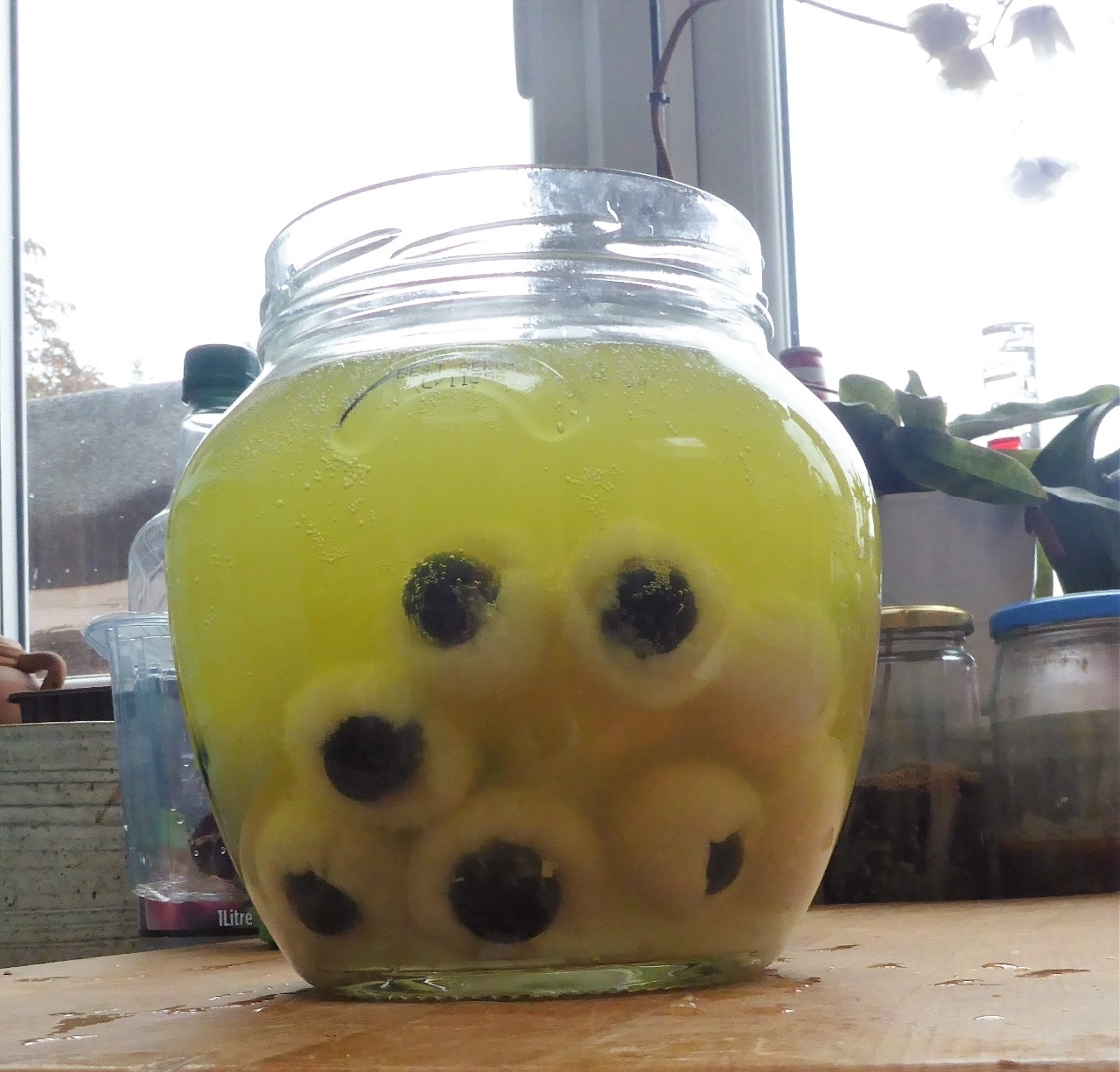
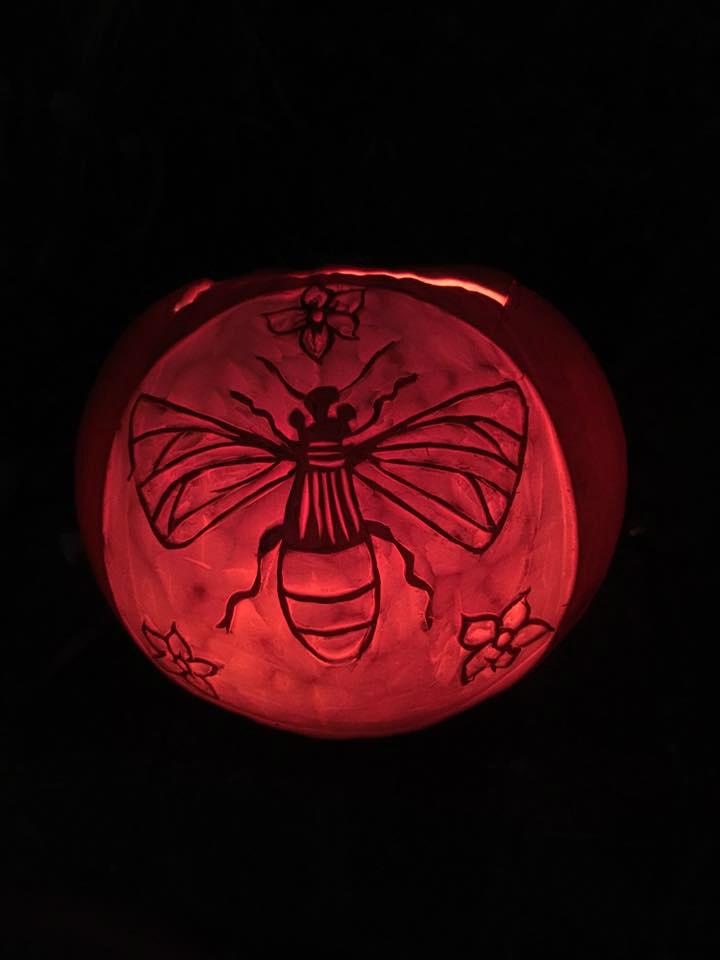


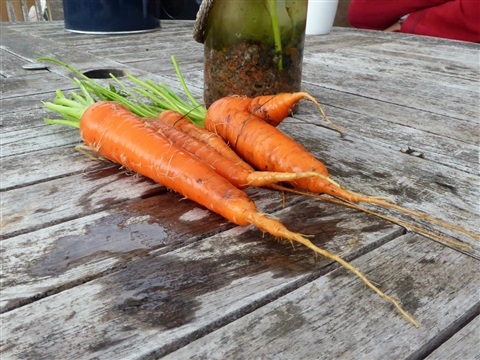

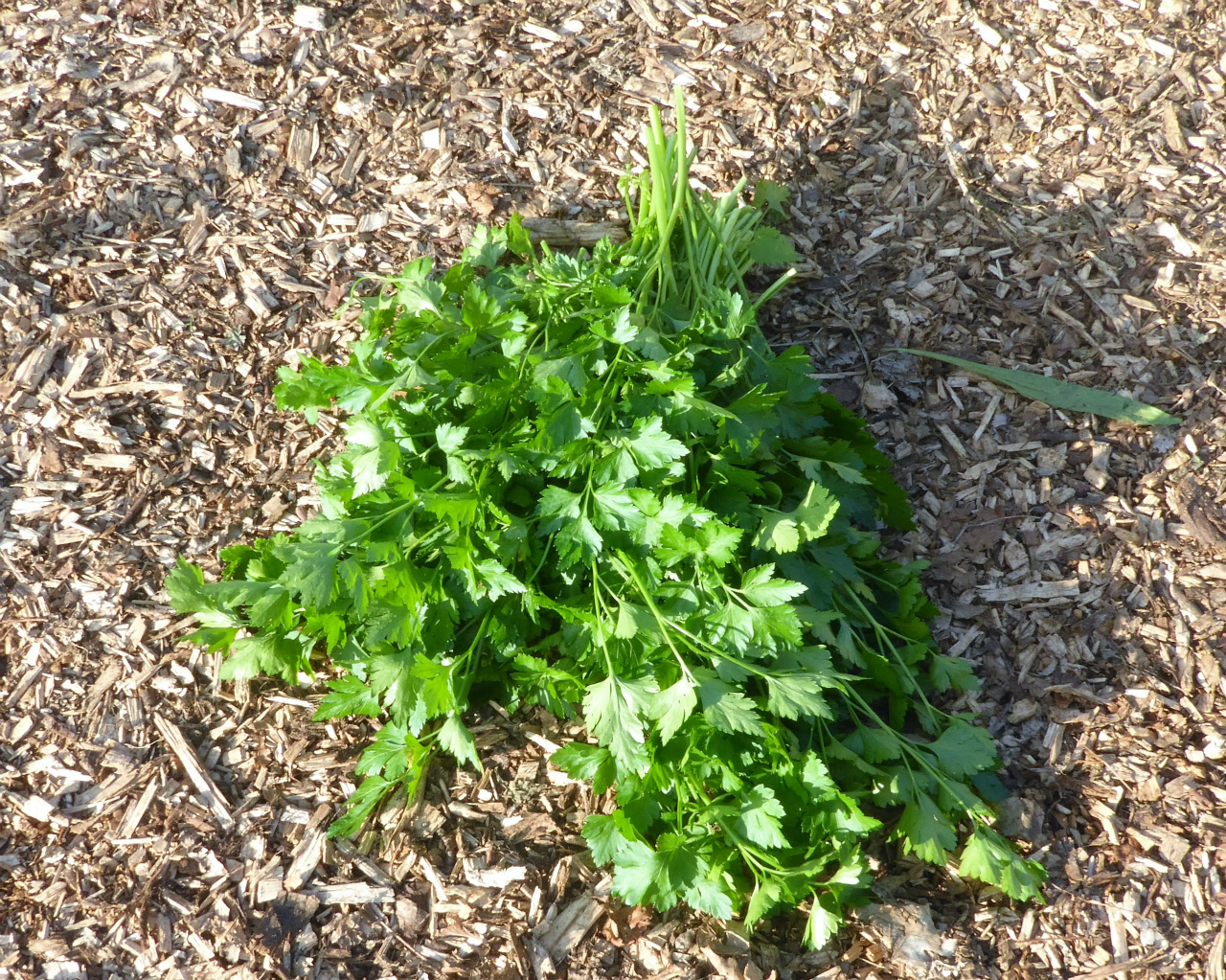
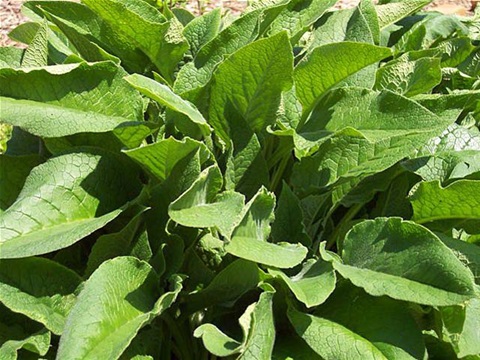
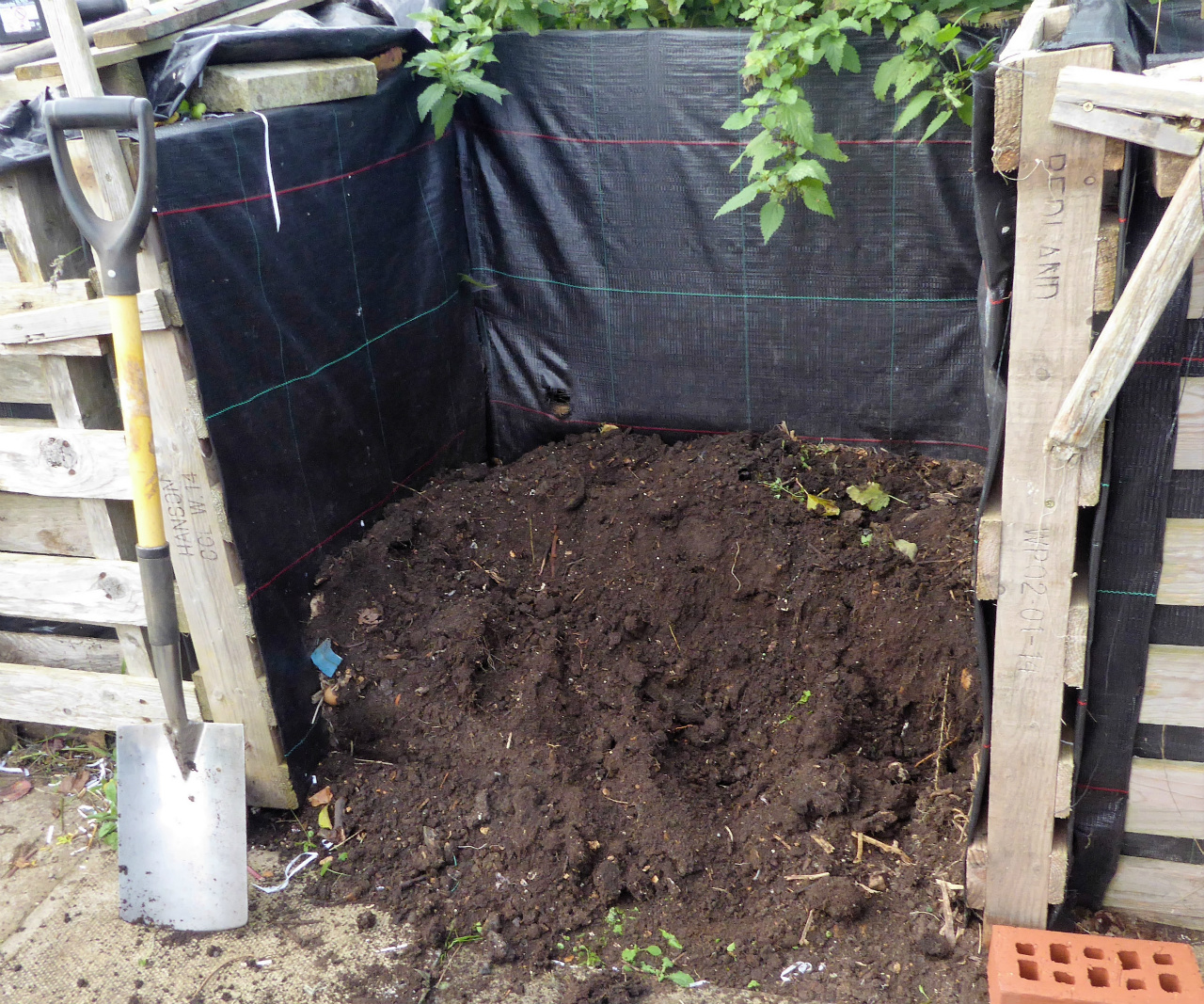
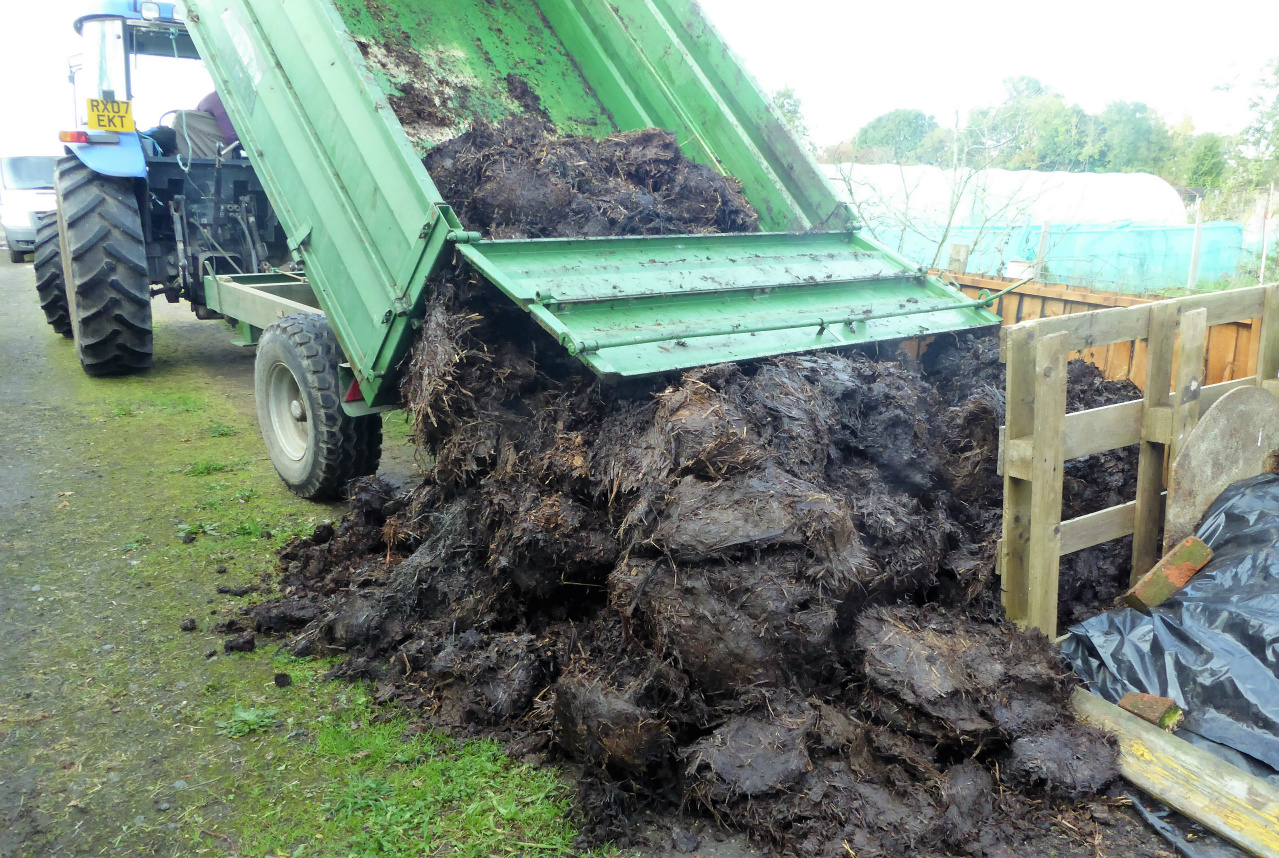

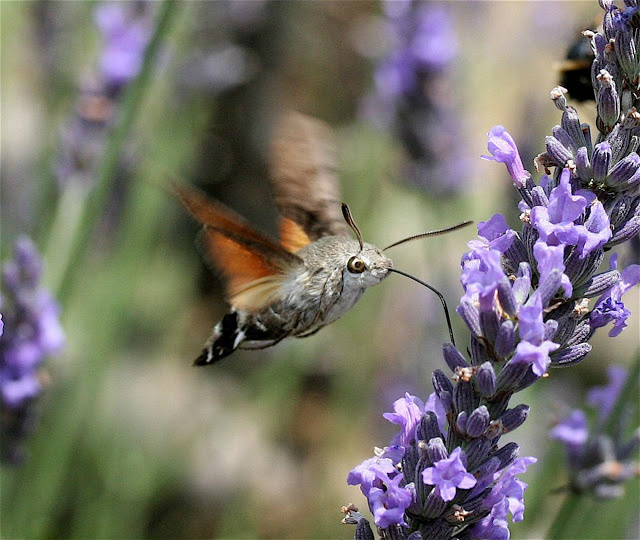
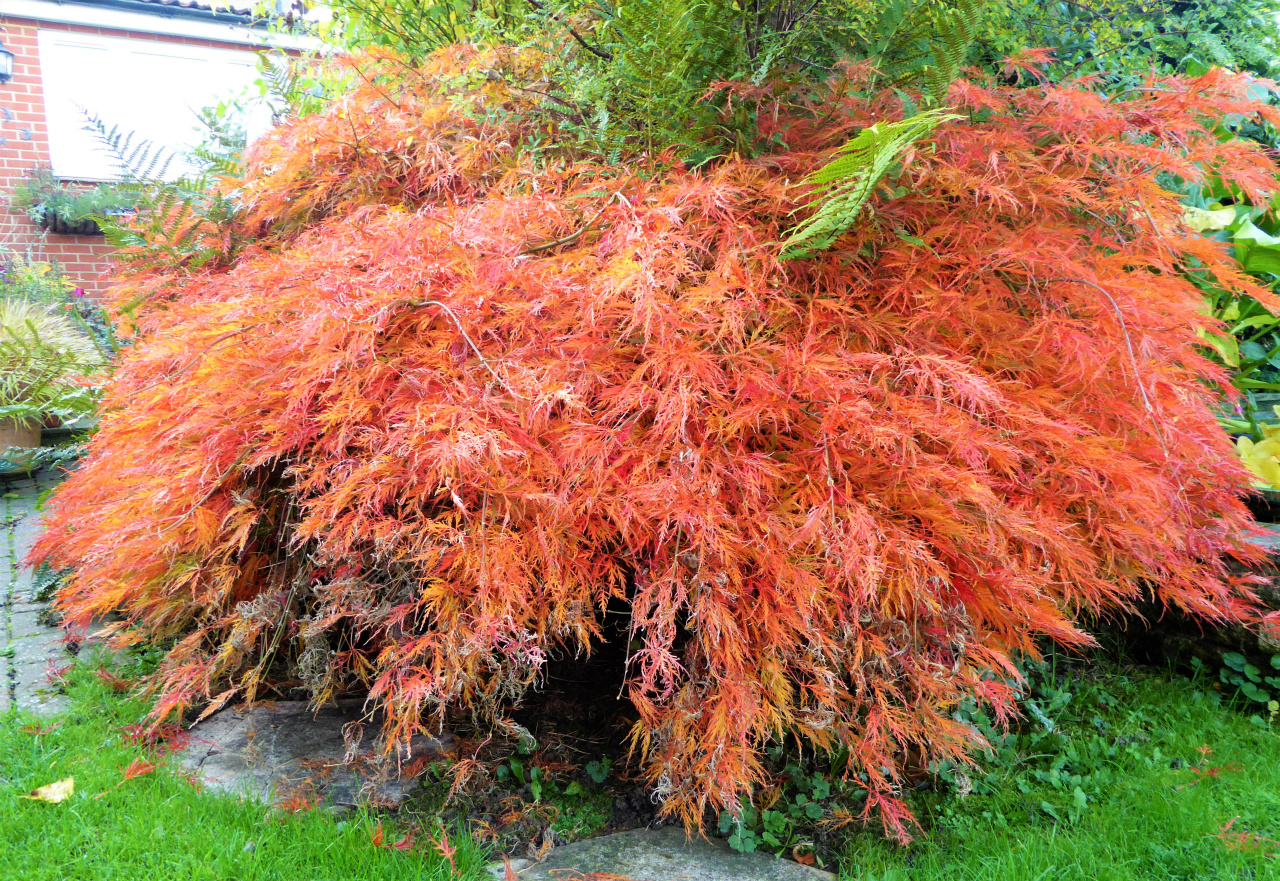



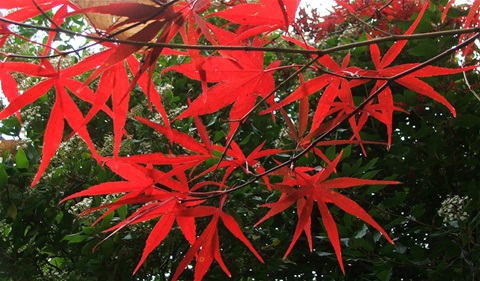

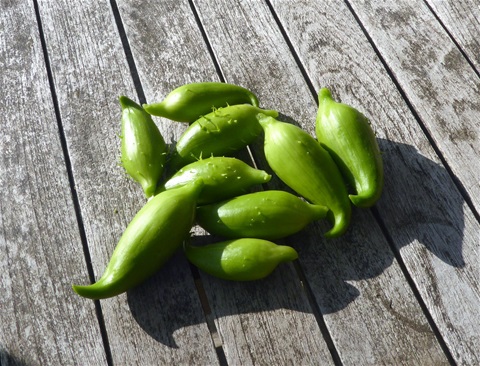
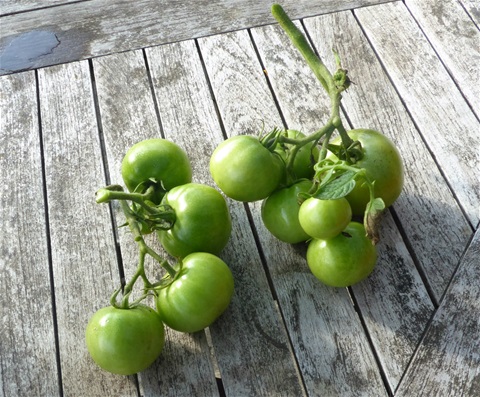
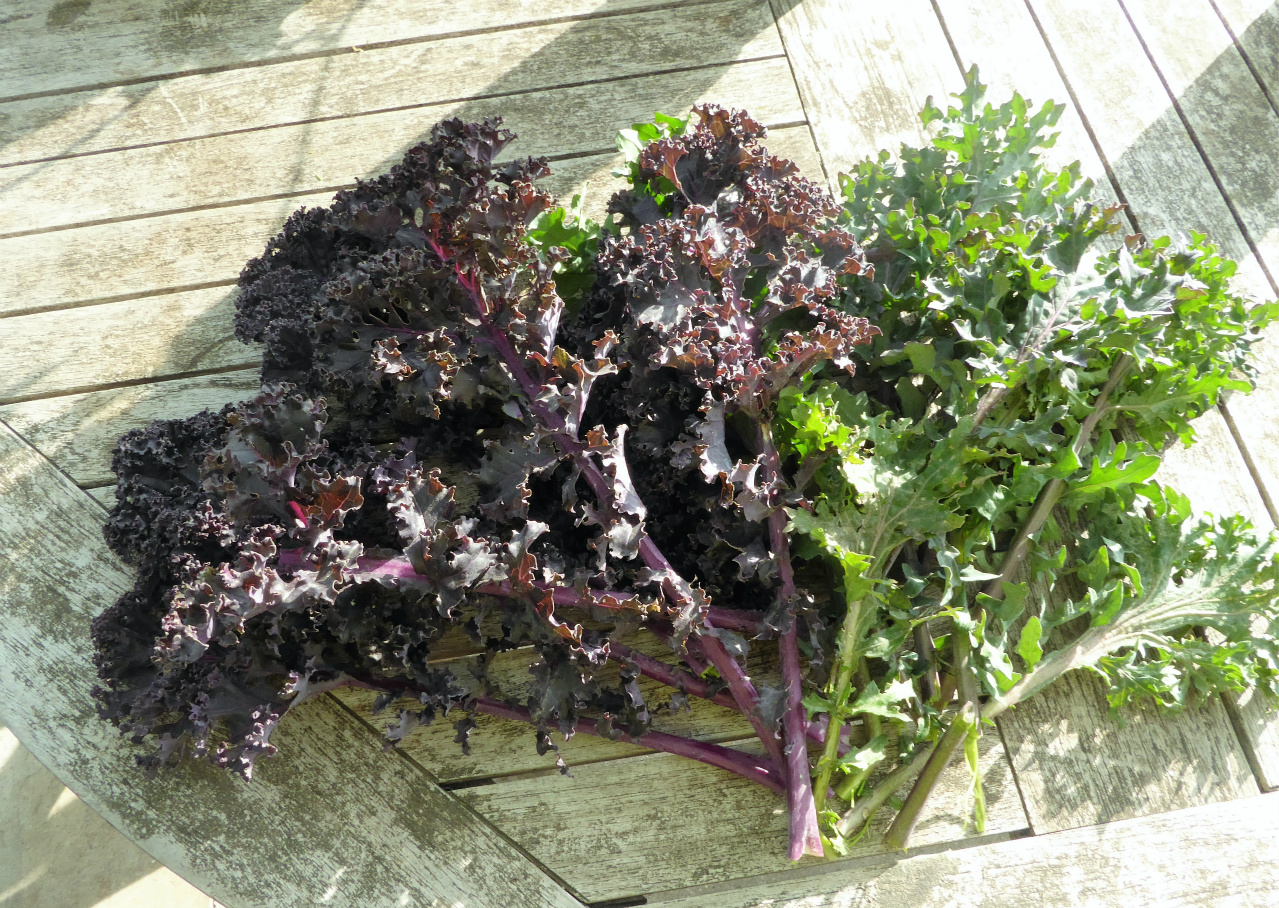

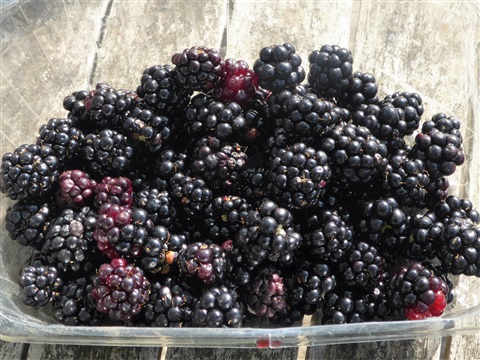

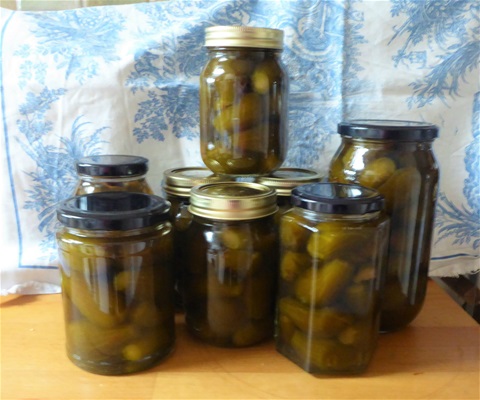
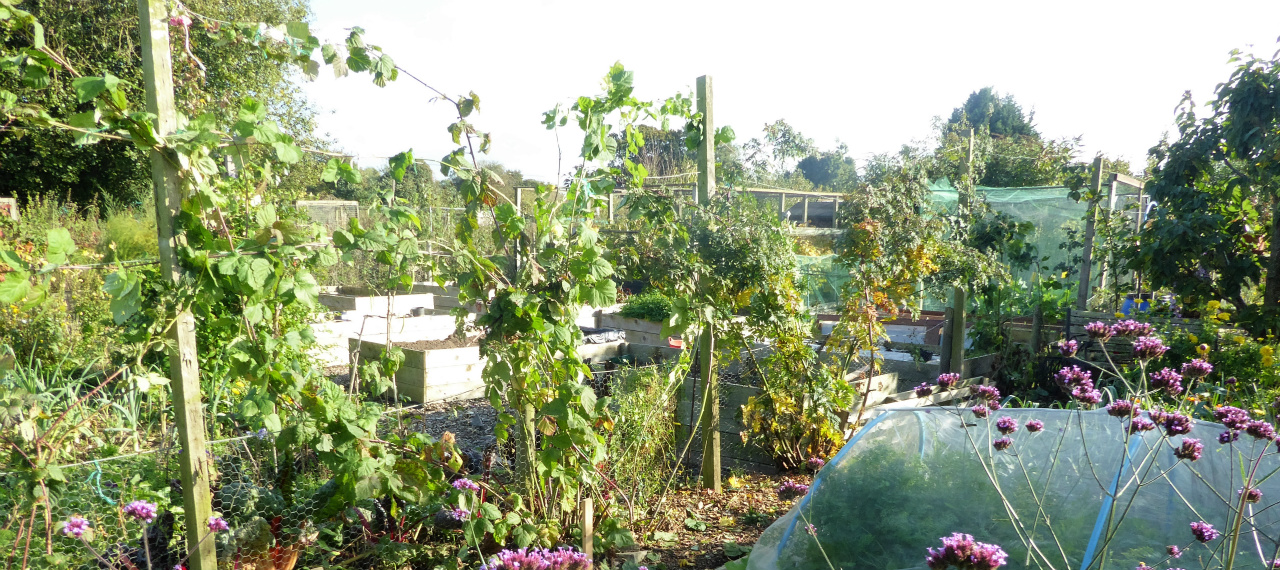




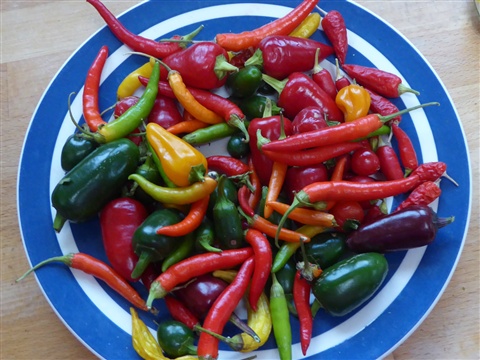

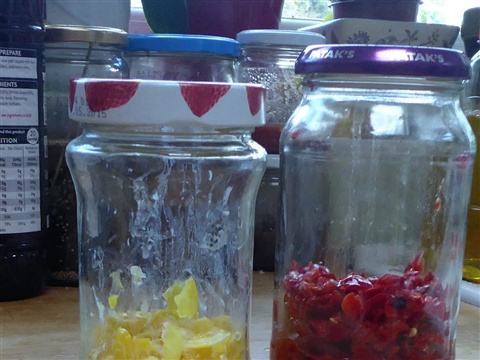
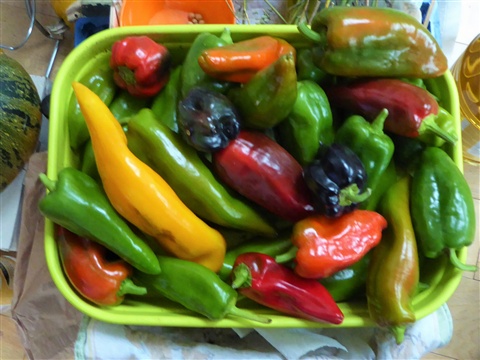
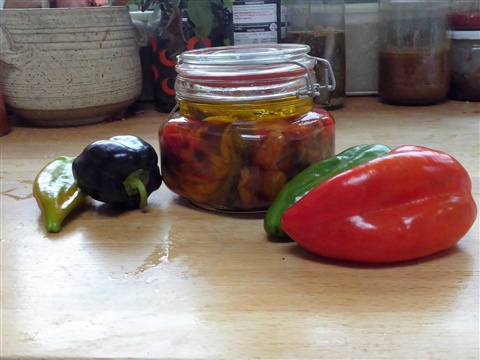

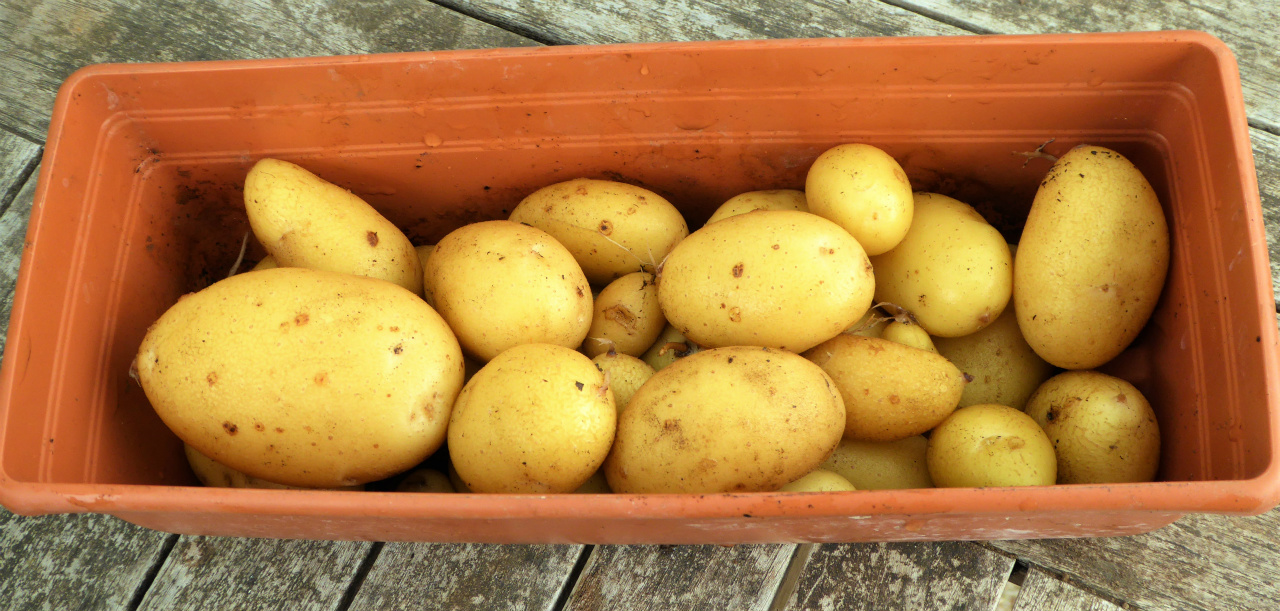
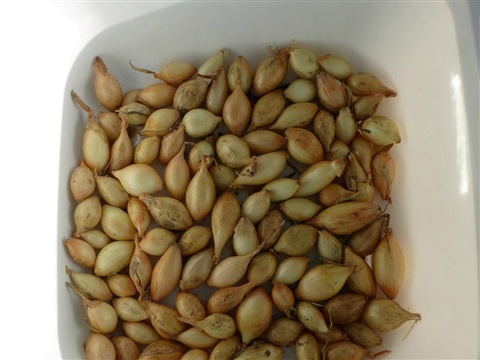

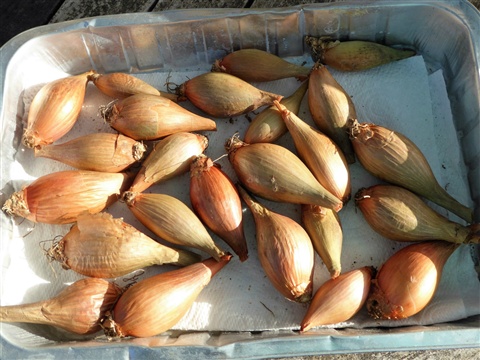
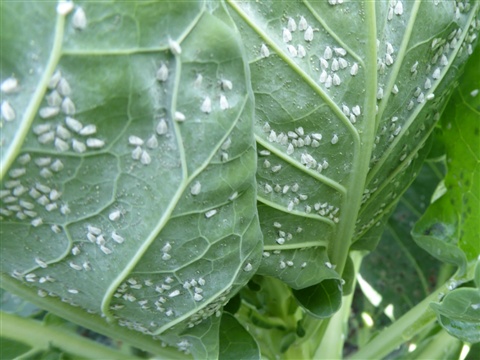
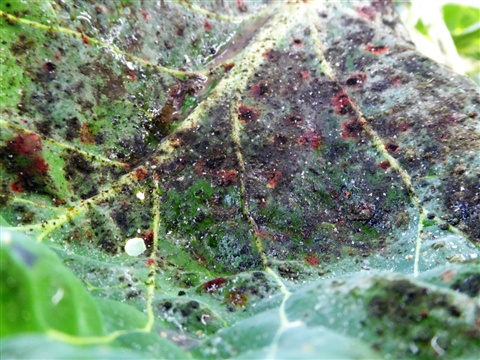
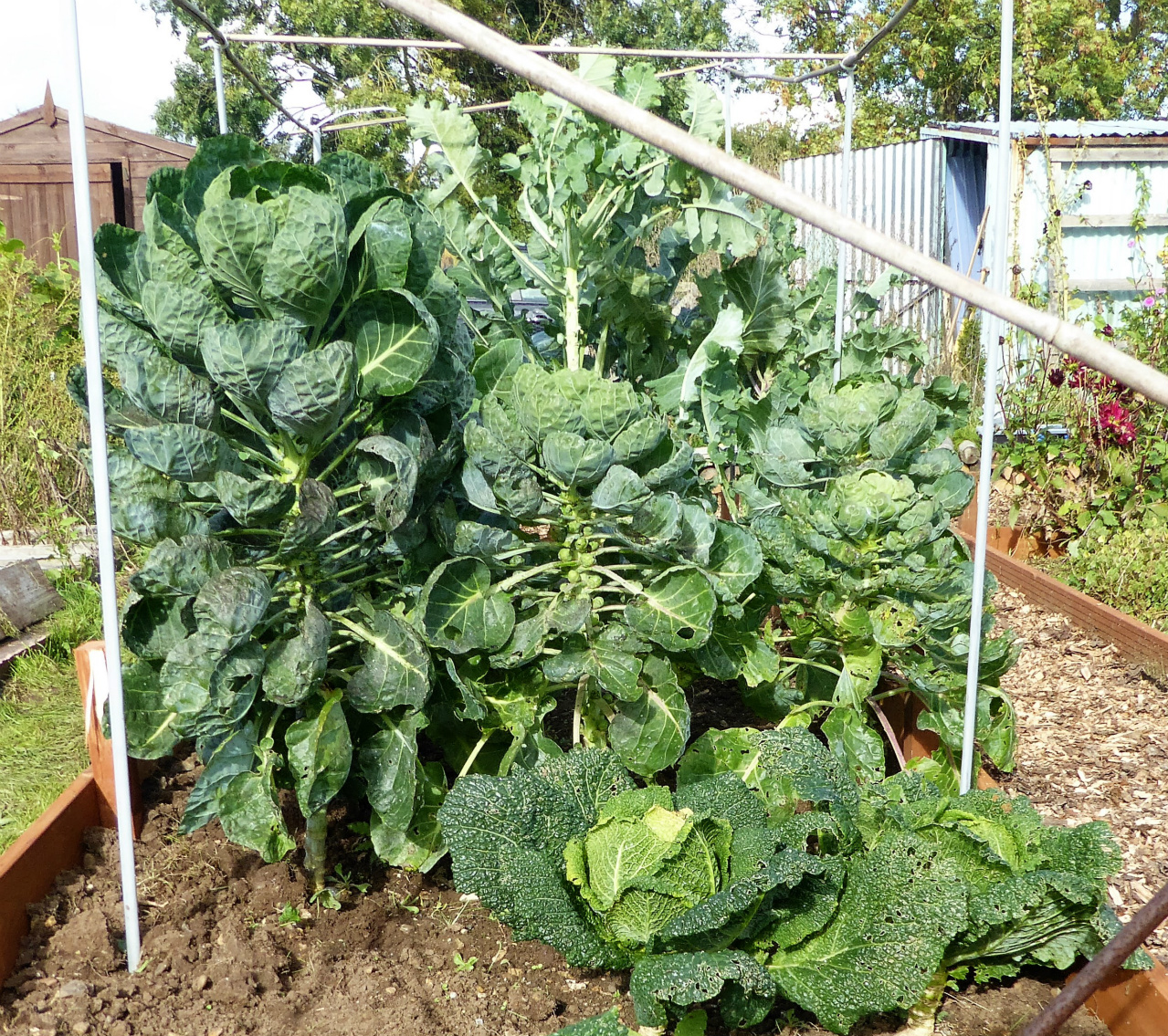

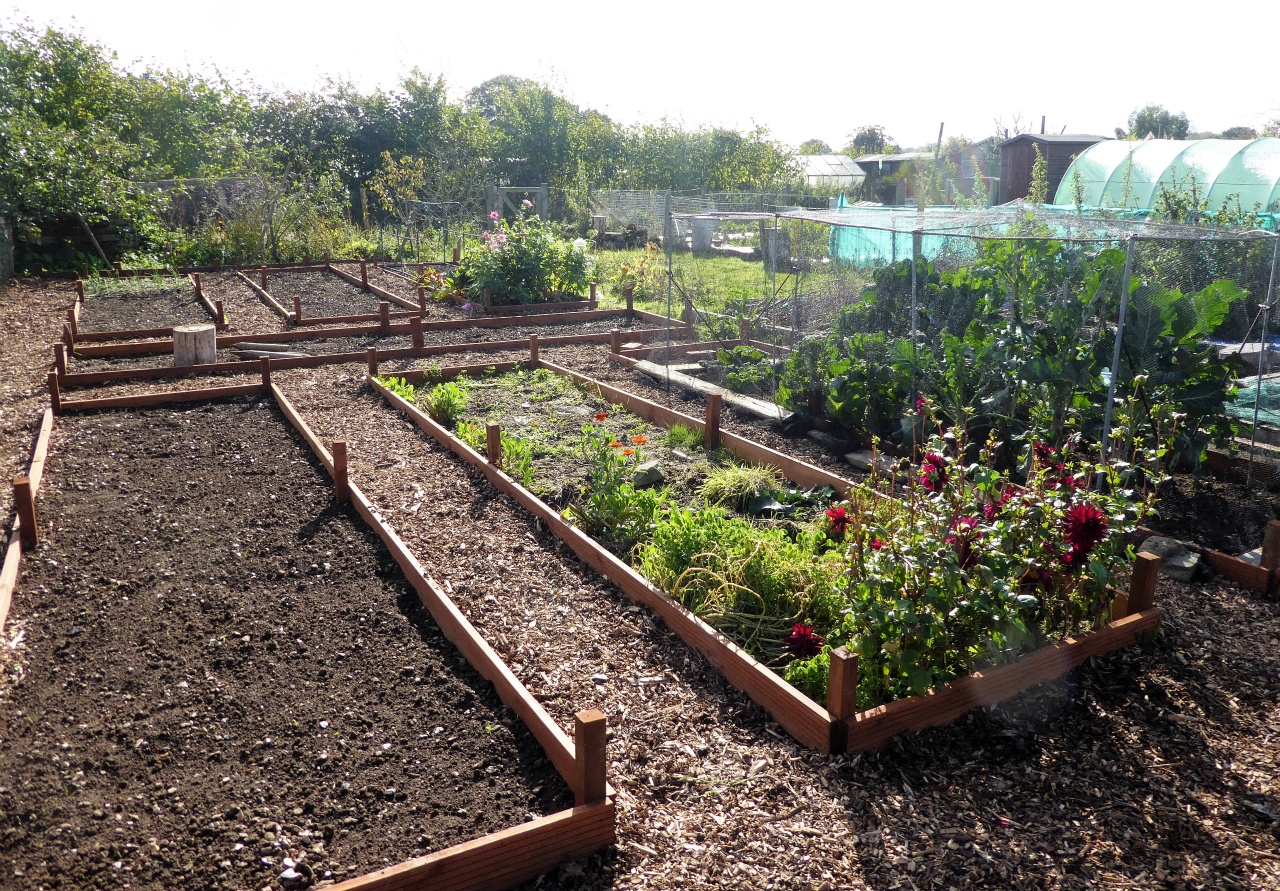
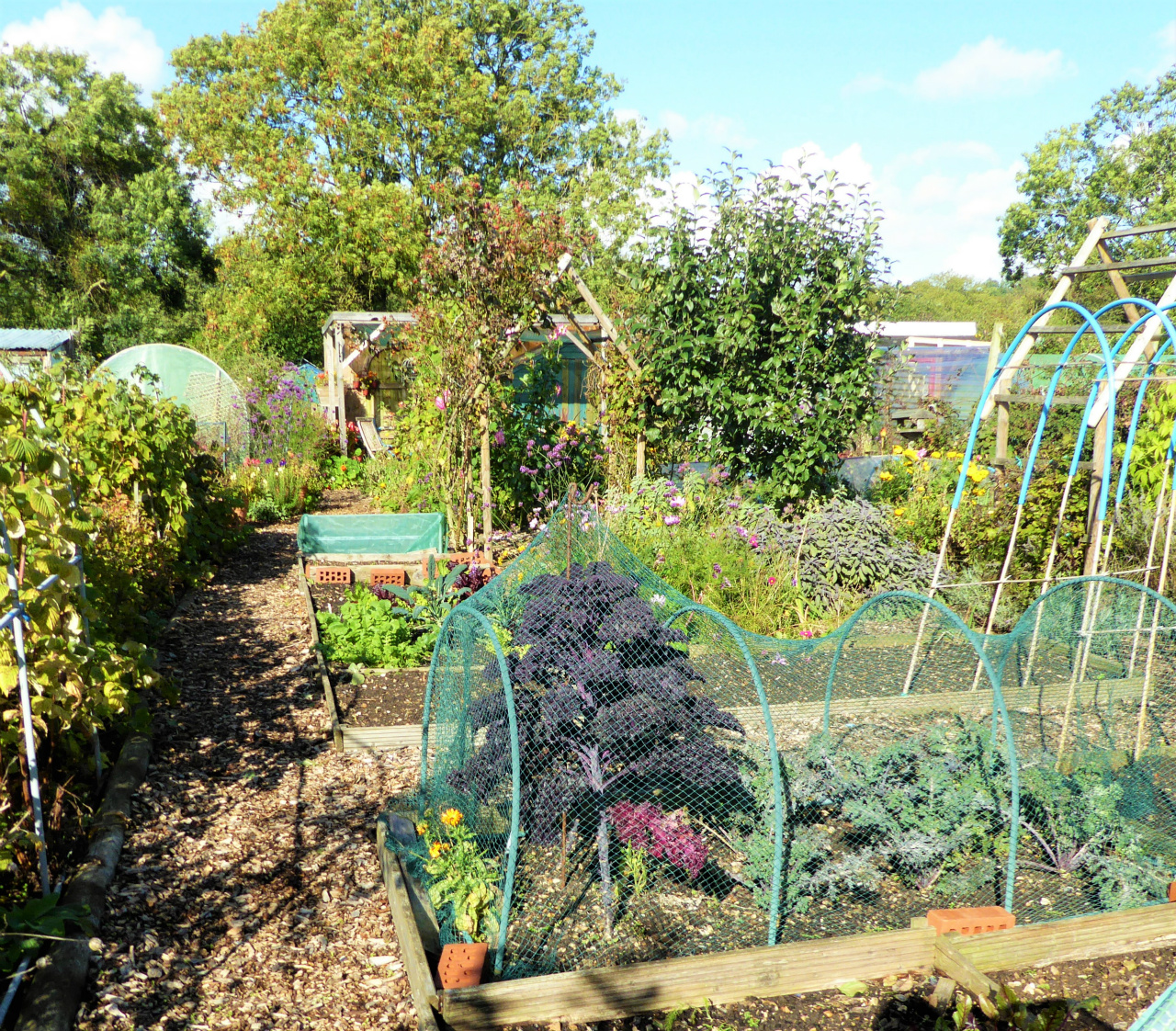


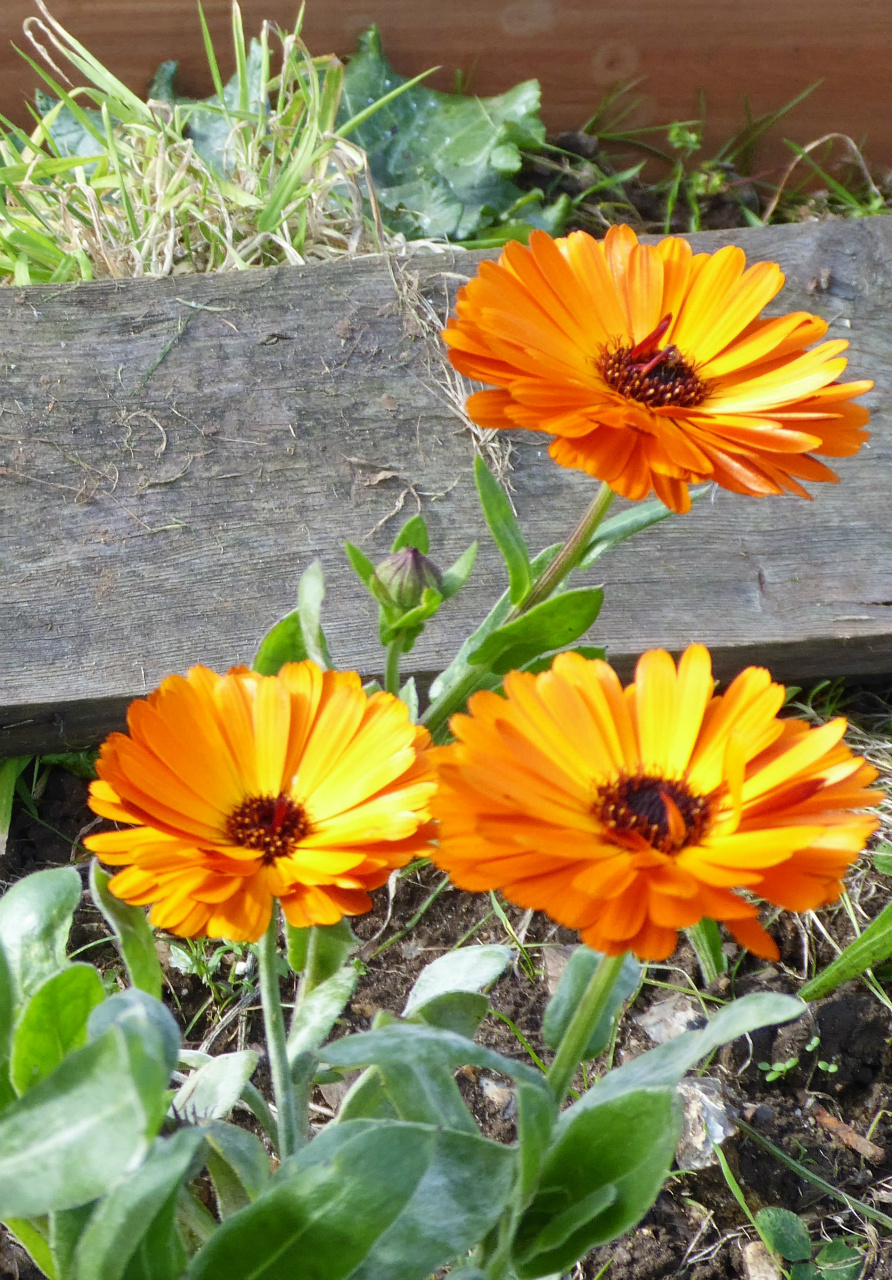
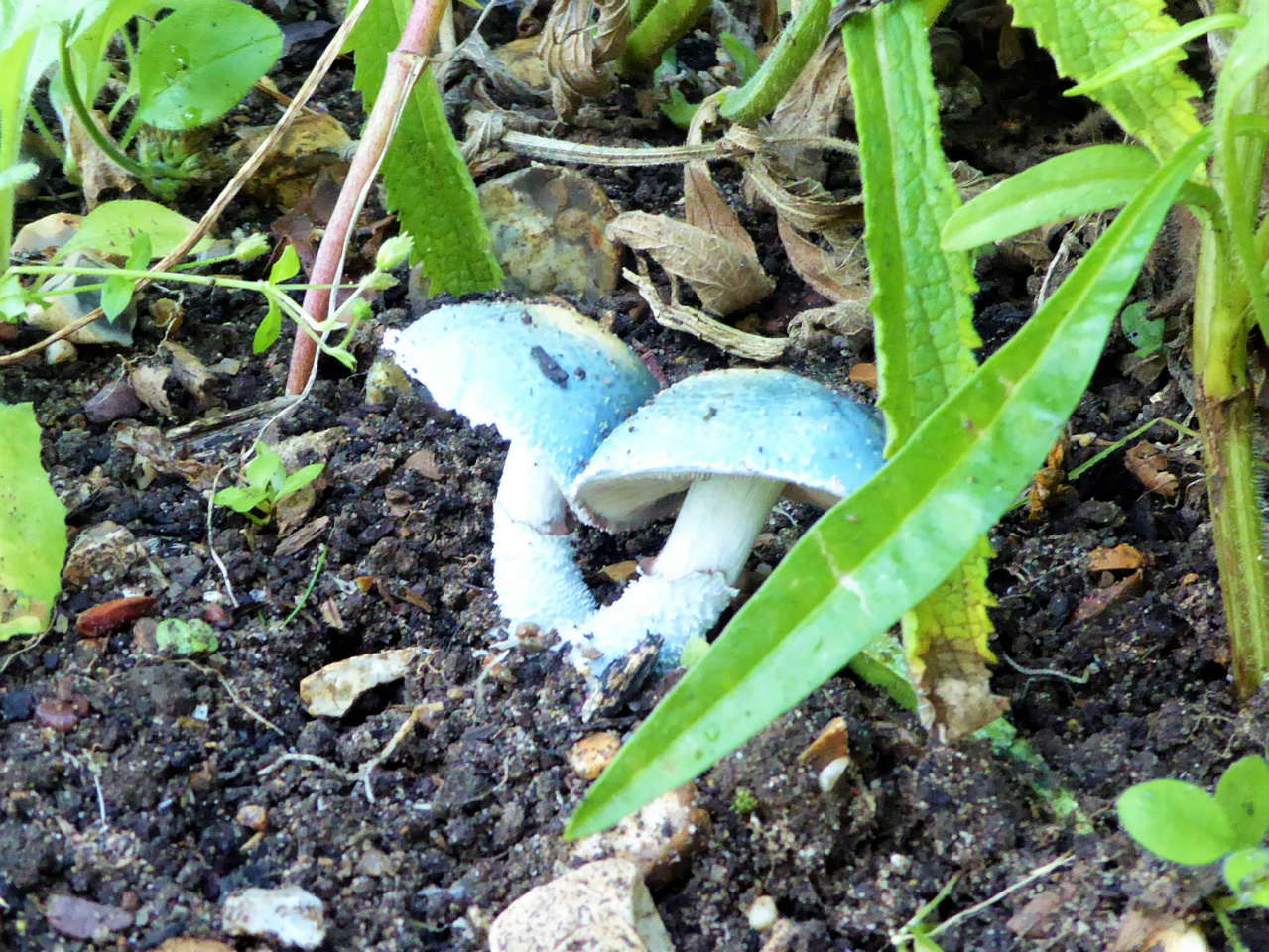

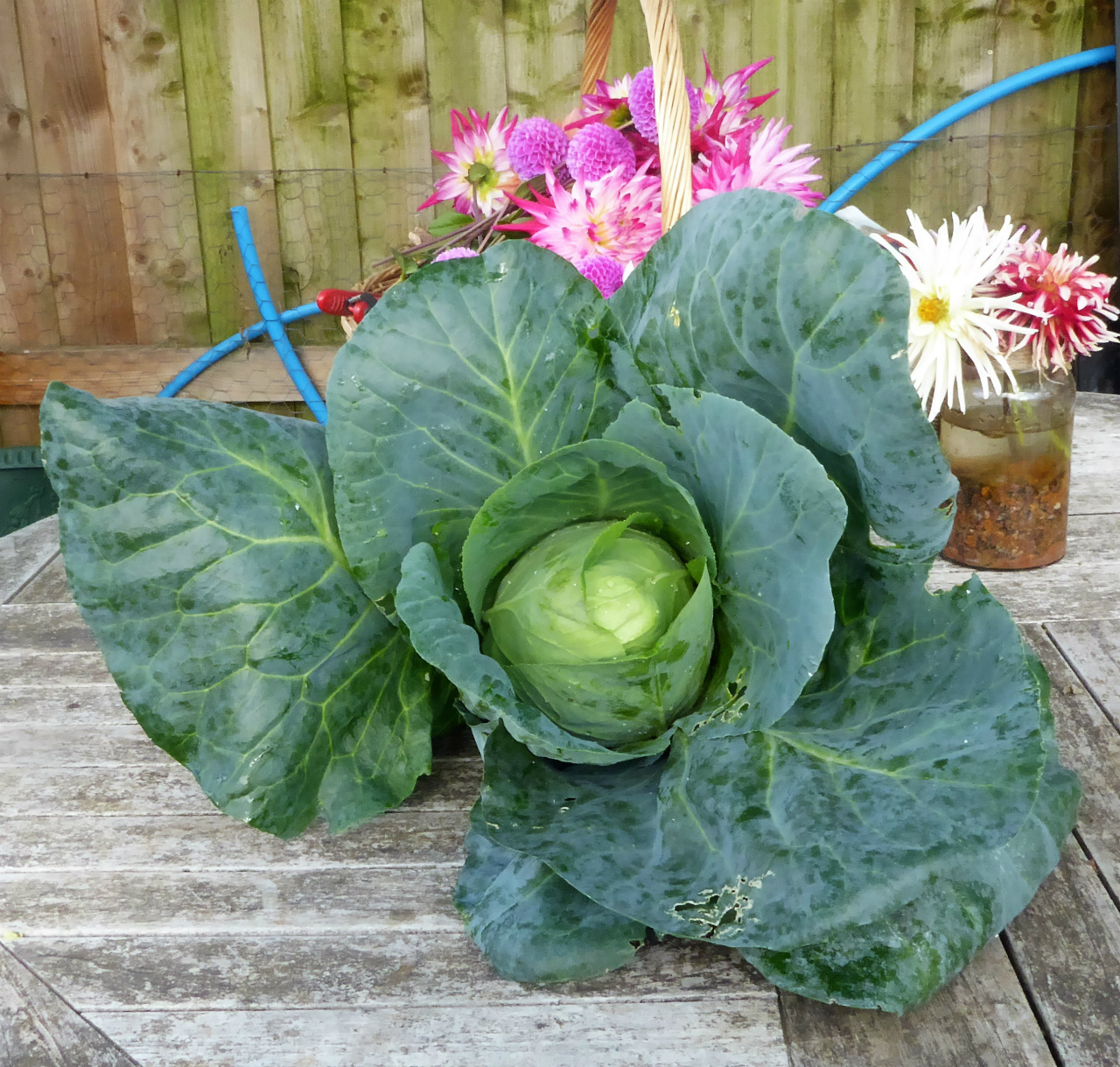


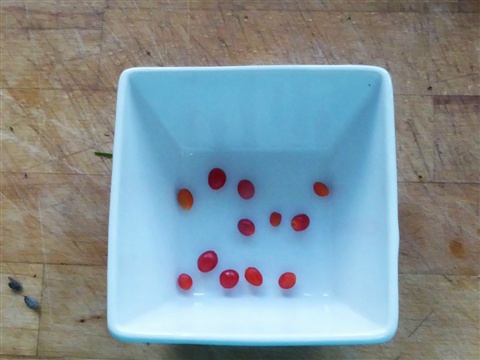


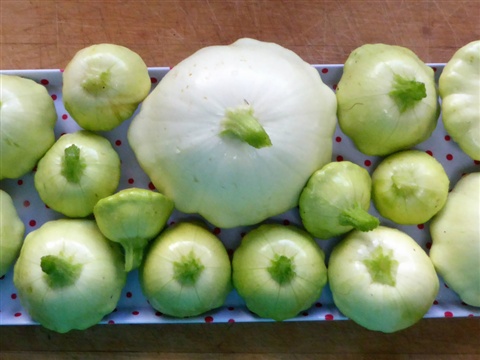
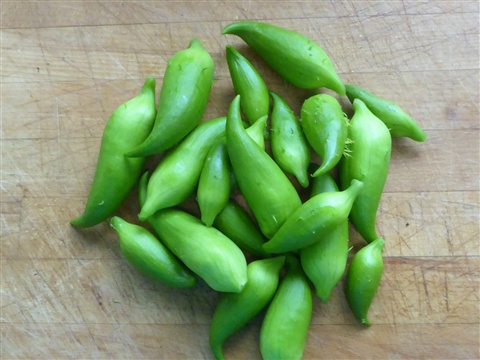
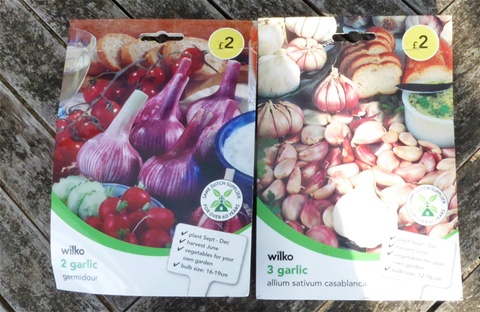
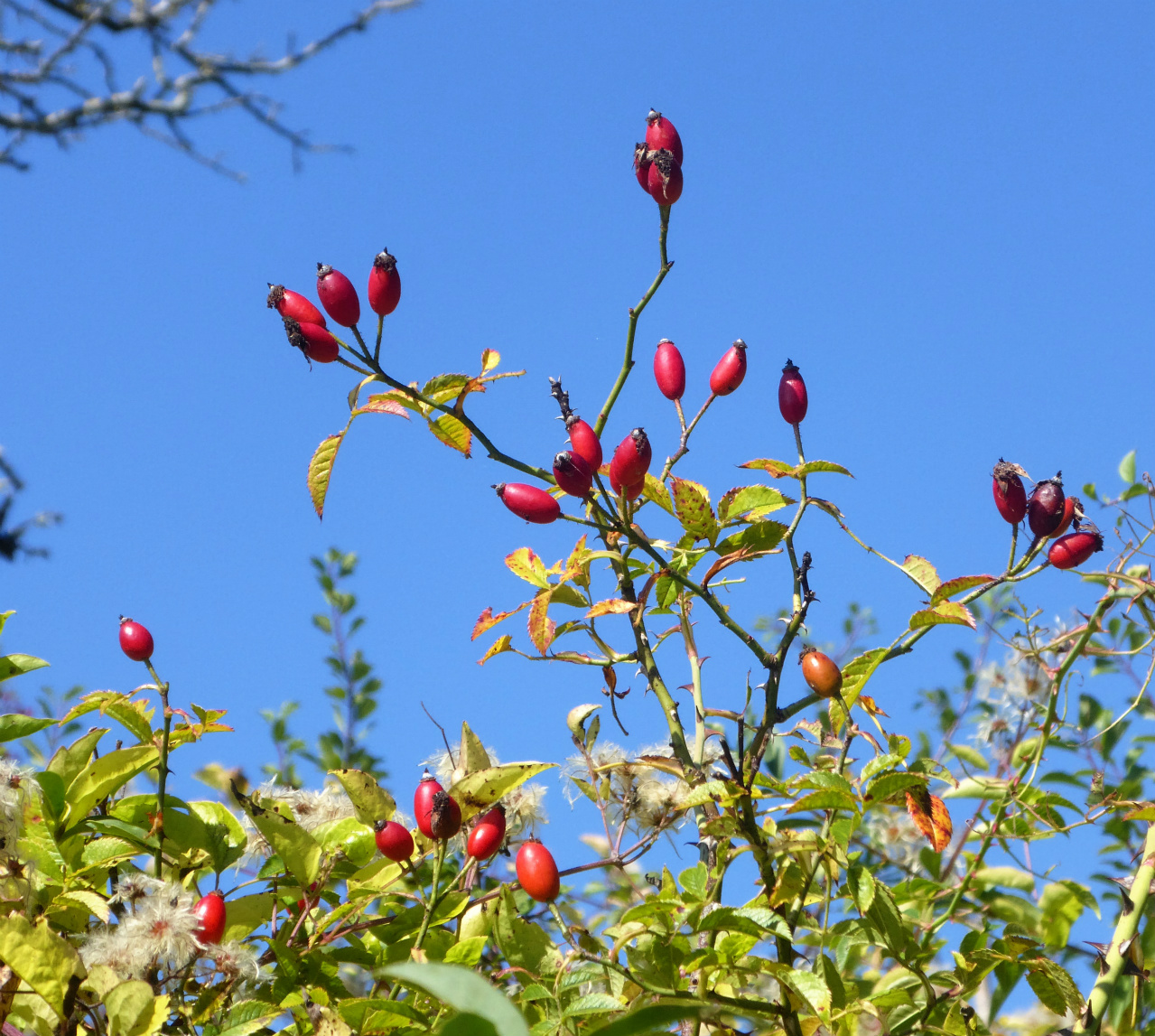


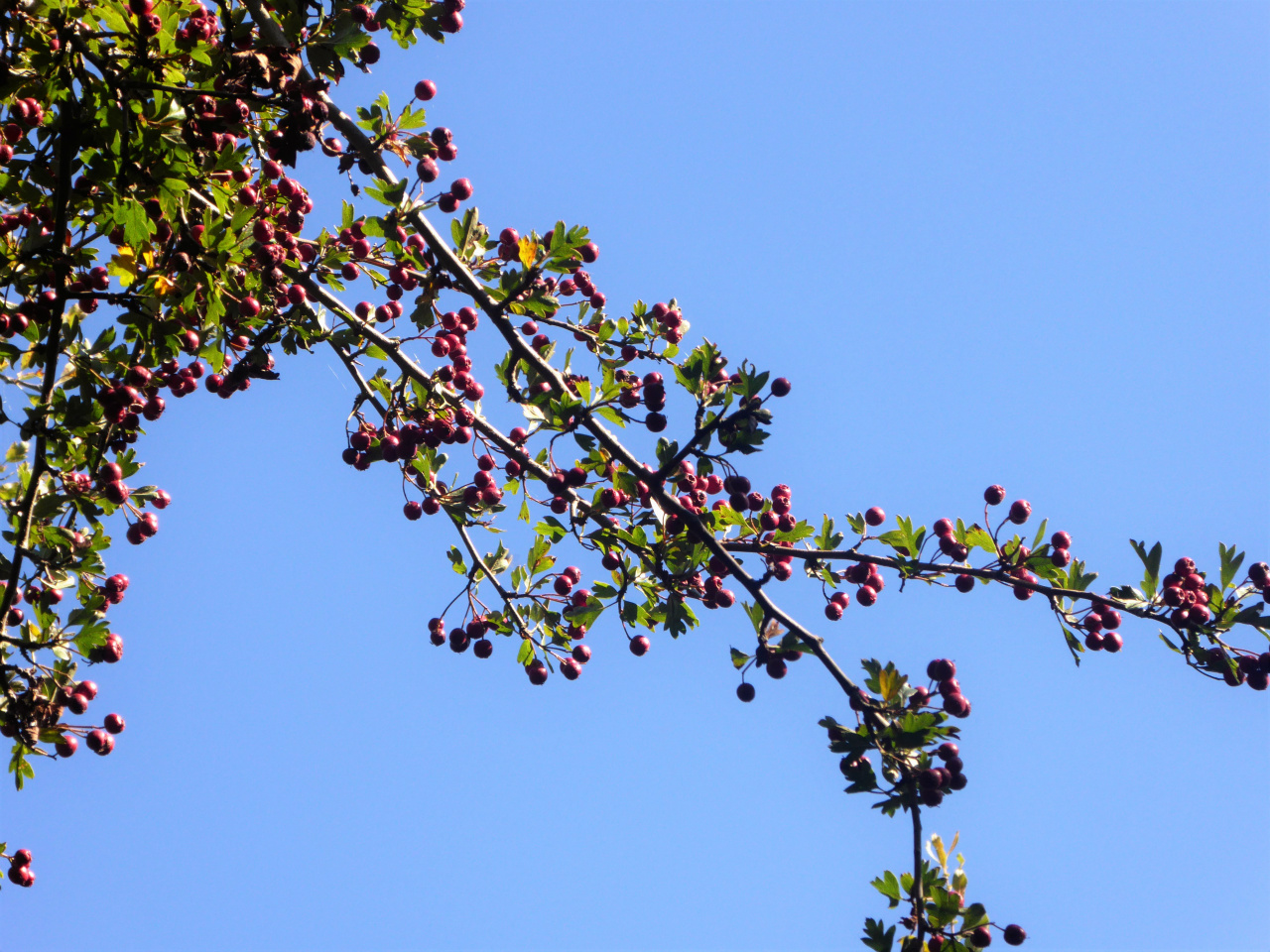


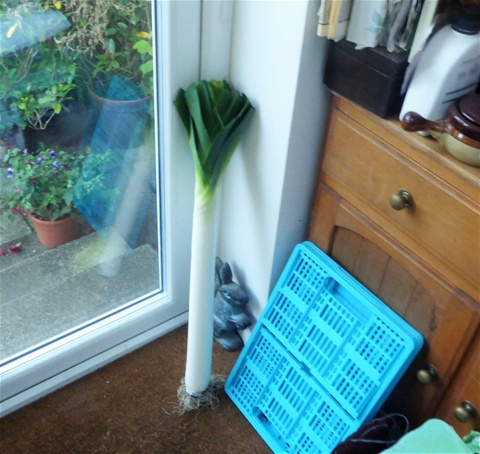
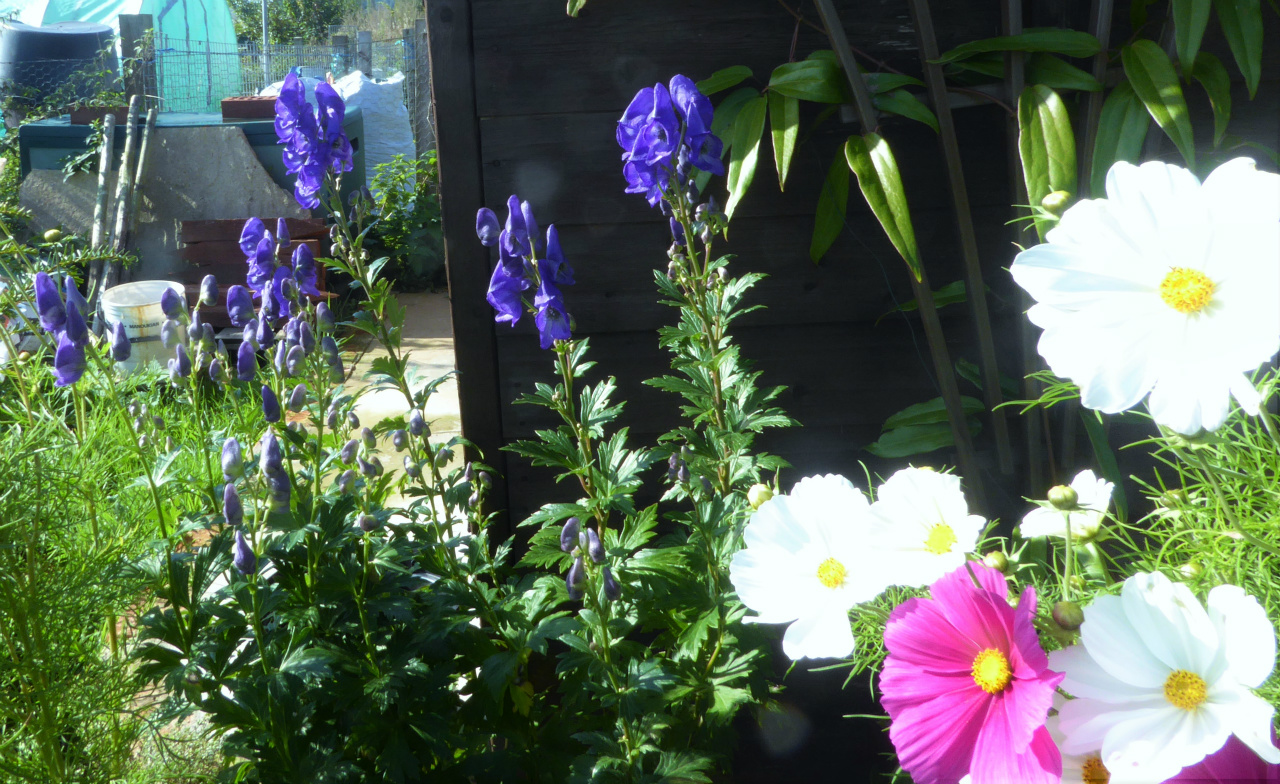
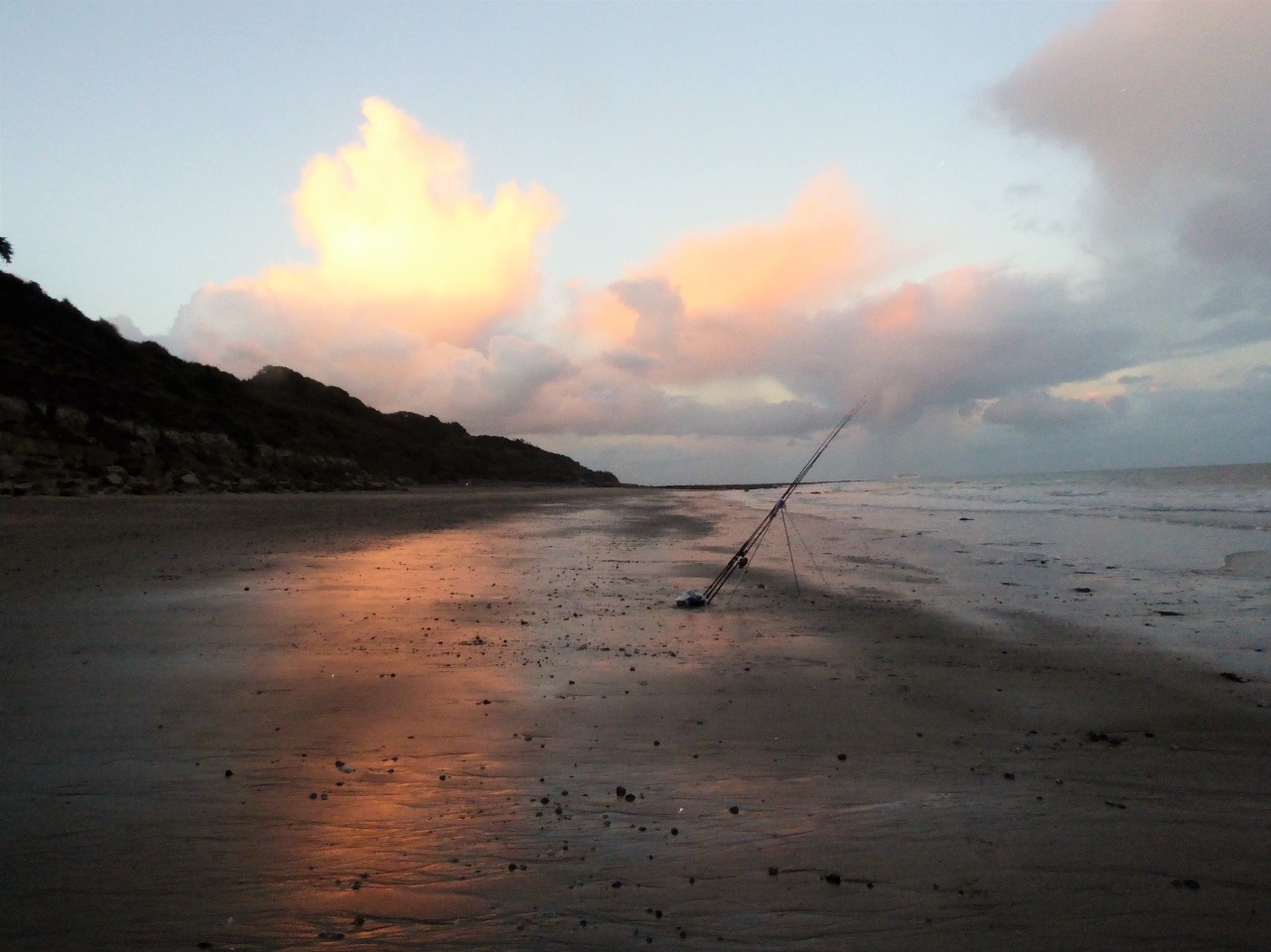
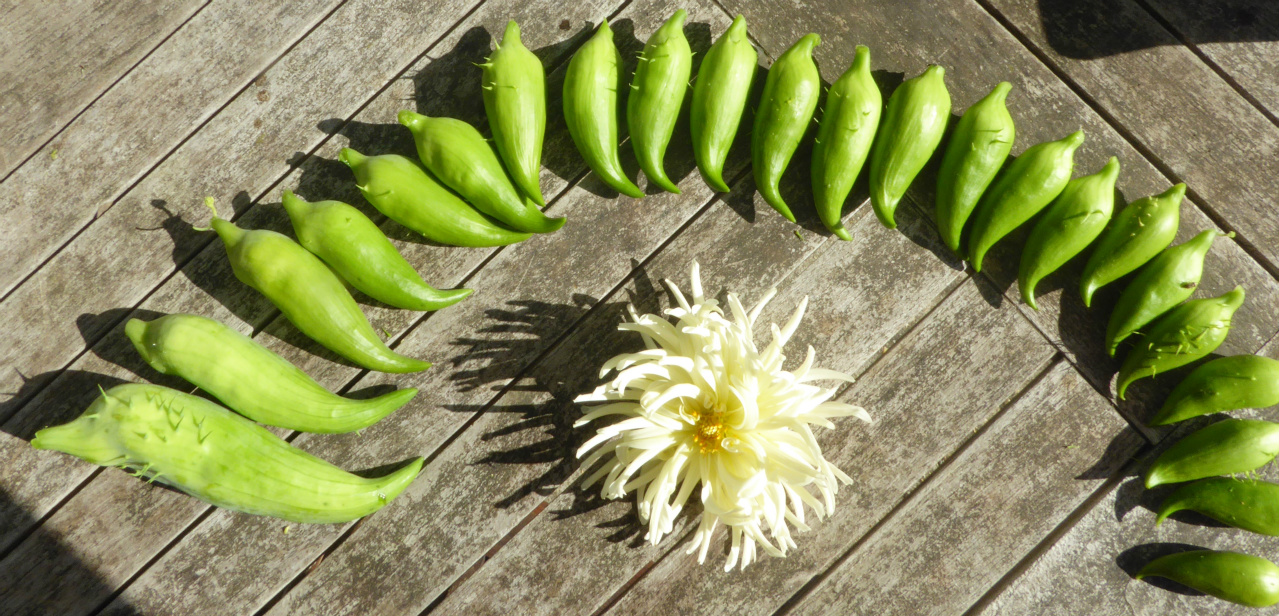
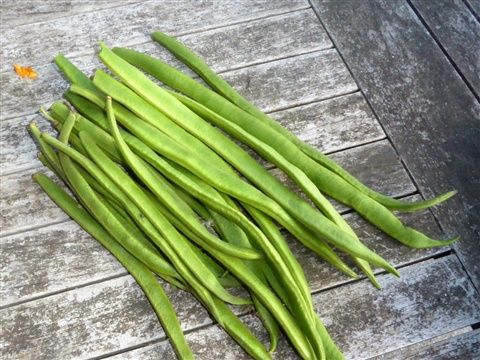

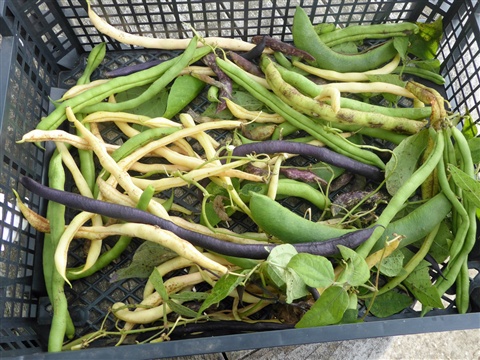
Lou@rainbowchard
Really impressed with your compost Kathy...beautiful. A great bonus with the parsley...I sometimes have some pop-up from my compost too. That's a big ol' pile of manure, well done getting it laid out.
Kathy
Thank you Lou ... only another dedicated grower could love compost!! And manure is such a heavy job so I am glad the rest got done this week on #146!
Margaret
What lovely lettuce! Mine are still tiny - lesson learned for next year that I should be planting out the fall seedlings sooner.
Kathy
I guess we are lucky in the UK that garden centres have an increasing variety of plug plants and we can buy them on line too although they are often expensive. The supermarket lettuce tray was 99p!
Margaret
Unfortunately most garden centers around here don't offer veg seedlings past mid-summer. This year I was lucky enough to get a tray from the farm I volunteer but it was a bit late in the season.
Kathy
I always forget to sow a succession of seeds so buying mixed trays that are meant to eat as baby leaves and planting them out has been really good, Margaret. Do you get these in your shops?
Kathy
Thanks Dave! The tomatoes are an excellent variety and all the better for suddenly appearing like that. On the list every year
Dave@OurHappyAcres
Those Chocolate Cherry tomatoes are lovely! And belated congrats on that Gold Award. My garden is never that tidy, for sure.
Kathy
Thank you for your suggestion Trill... when I have enough to make a tablespoonful that sounds a good idea!
Trillium
Goji berries are usually dehydrated and used in smoothies.
Congrats on the lotty win!
Kathy
Picked another bowlful today Beryl, so perhaps yours will come into their own soon. Hope so
Beryl
You are lucky! I have 3 small 'giant' achocha lurking. Hope you have a lovely week on the Island.
Kathy
Thank you guys! Lovely late sun but so windy today that there will be no fishing tonight. Fish for dinner from yesterday's catch, I am really looking forward to it: pics of that "harvest" next week!!
Glenna
Love the sunset photo!!!
Dave@OurHappyAcres
I hope you have a pleasant holiday!